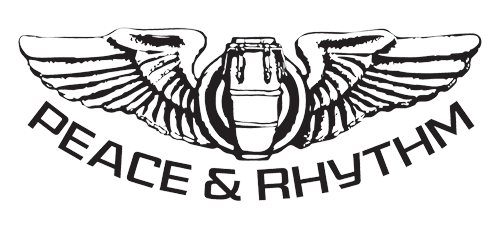News & Updates
Please note: this page is here for archival purposes only and is no longer being updated.
[
{
"id": "tim-maia-sept-28-1942-march-15-1998",
"data": {
"title": "Tim Maia / Sept 28, 1942 - March 15, 1998",
"slug": "tim-maia-sept-28-1942-march-15-1998",
"date": "2017-09-28T00:00:00.000Z"
},
"body": "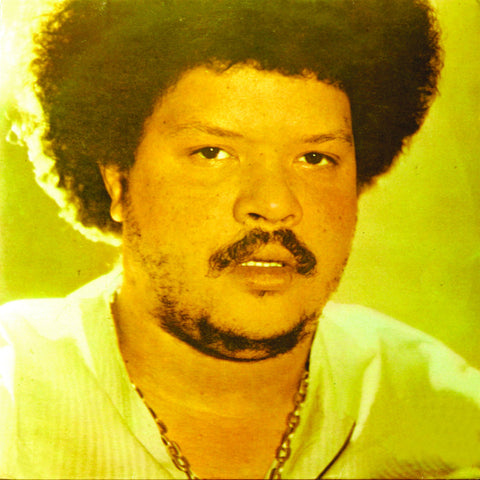\n\nFeliz anniversário para **Tim Maia** , the fun & lovable Brazilian soul singer and MPB star who's direct honesty appealed to his fans. Born Sebastião Rodrigues Maia from a favela of Rio, the 18th of 19 children, he started as a drummer at 14 but soon became an excellent guitarist. He was a childhood friend of Roberto Carlos, Erasmo Carlos and Jorge Ben. \n\nHe was in the doo-wop group The Sputniks with Roberto Carlos before adopting the name Tim Maia and going solo. He spent the early '60s in the US and recorded there with the doo-wop group The Ideals (the record had young Milton Banana on percussion!). Maia's 1963 pot bust got him deported and killed the group. He then found himself in São Paulo and started making samba-soul records in the late '60s as one of Brazil's first soul artists. \n\nHe dueted with Elis Regina and wrote some tunes for Roberto Carlos and aligned himself with Tropicalistas like Os Mutantes. He became quite a big star with his soul sound and sang in both Portuguese and English. In the mid-'70s he started his own publishing company and label Seroma. He became heavily influenced by the Rational Culture cult and started writing his lyrics based on their teachings. The resulting album was rejected by his major label and Maia ended up purchasing the masters and releasing it on Seroma, along with a follow-up album. The albums flopped and he eventually left the cult. They became highly sought-after platters. \n\n\nHe went back to major labels and started producing disco to mixed results. As times got tougher, he found himself releasing a lot of his own music, alternated with appearing on pop dribble to fund them. In the '90s a whole new generation of urban Brazilian artists became very influenced by his records. \n\nHe joined the Socialist Party in '97. He was outspoken his whole career and frequently found himself blacklisted from major opportunities. There was a 2012 stage musical of his life, _Vale Tudo_. His son Léo Maia is a musician. The _Racional_ albums linked to the cult have been reissued to great acclaim and a compilation overview of his work appeared on Luaka Bop.",
"filePath": "content/posts/tim-maia-sept-28-1942-march-15-1998.md",
"digest": "3dd94d1576edc38c",
"rendered": {
"html": "<p><img src=\"/images/0008786288_10_large.jpg\" alt=\"\"></p>\n<p>Feliz anniversário para <strong>Tim Maia</strong> , the fun & lovable Brazilian soul singer and MPB star who’s direct honesty appealed to his fans. Born Sebastião Rodrigues Maia from a favela of Rio, the 18th of 19 children, he started as a drummer at 14 but soon became an excellent guitarist. He was a childhood friend of Roberto Carlos, Erasmo Carlos and Jorge Ben.</p>\n<p>He was in the doo-wop group The Sputniks with Roberto Carlos before adopting the name Tim Maia and going solo. He spent the early ’60s in the US and recorded there with the doo-wop group The Ideals (the record had young Milton Banana on percussion!). Maia’s 1963 pot bust got him deported and killed the group. He then found himself in São Paulo and started making samba-soul records in the late ’60s as one of Brazil’s first soul artists.</p>\n<p>He dueted with Elis Regina and wrote some tunes for Roberto Carlos and aligned himself with Tropicalistas like Os Mutantes. He became quite a big star with his soul sound and sang in both Portuguese and English. In the mid-’70s he started his own publishing company and label Seroma. He became heavily influenced by the Rational Culture cult and started writing his lyrics based on their teachings. The resulting album was rejected by his major label and Maia ended up purchasing the masters and releasing it on Seroma, along with a follow-up album. The albums flopped and he eventually left the cult. They became highly sought-after platters.</p>\n<p>He went back to major labels and started producing disco to mixed results. As times got tougher, he found himself releasing a lot of his own music, alternated with appearing on pop dribble to fund them. In the ’90s a whole new generation of urban Brazilian artists became very influenced by his records.</p>\n<p>He joined the Socialist Party in ‘97. He was outspoken his whole career and frequently found himself blacklisted from major opportunities. There was a 2012 stage musical of his life, <em>Vale Tudo</em>. His son Léo Maia is a musician. The <em>Racional</em> albums linked to the cult have been reissued to great acclaim and a compilation overview of his work appeared on Luaka Bop.</p>",
"metadata": {
"headings": [],
"localImagePaths": [],
"remoteImagePaths": [],
"frontmatter": {
"web-scraper-order": "1746562136-499",
"web-scraper-start-url": "https://peaceandrhythm.com",
"title": "Tim Maia / Sept 28, 1942 - March 15, 1998",
"pagination": "https://www.peaceandrhythm.com/?page=12",
"date": "September 28, 2017",
"post": "Tim Maia / Sept 28, 1942 - March 15, 1998",
"post-href": "https://www.peaceandrhythm.com/blogs/news/tim-maia-sept-28-1942-march-15-1998",
"slug": "tim-maia-sept-28-1942-march-15-1998"
},
"imagePaths": []
}
},
"collection": "blog"
},
{
"id": "tuli-kupferberg-sept-28-1923-july-12-2010",
"data": {
"title": "Tuli Kupferberg / Sept 28, 1923 - July 12, 2010",
"slug": "tuli-kupferberg-sept-28-1923-july-12-2010",
"date": "2017-09-28T00:00:00.000Z"
},
"body": "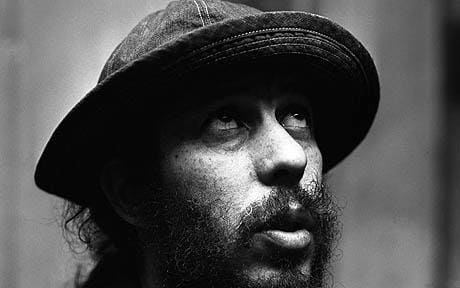\n\nHappy birthday to the beatnik poet/singer/artist/anarchist **Tuli Kupferberg**! From NYC, he founded a beat magazine, _Birth_ , in 1958, publishing Allen Ginsberg, Diane DiPrima, Leroi Jones (aka Amiri Baraka), Ted Joans and others. \n\nIn 1964 he and Ed Sanders founded the unfiltered anti-pop group The Fugs, who released their humorous and crude tunes on ESP Disk and turned the NYC rock scene upside down (despite being the old man of the scene!). Tuli wrote several of their tunes, such as \"CIA Man\" and \"Kill For Peace\". \n\nHe cut the bizarre spoken word album _No Deposit, No Return_ in '66, the same year that he published his book _1001 Ways To Beat The Draft_. He kept on rabble-rousing, releasing an album on Shimmy-Disk in '89, drawing cartoons, participating in street theater, doing some acting in underground films, appearing in Richard Pryor's _Dynamite Chicken_ , hosting a public access TV show and, later on, running a YouTube channel. \n\n\"Nobody who lived through the '50s thought the '60s could've existed. So there's always hope.\"",
"filePath": "content/posts/tuli-kupferberg-sept-28-1923-july-12-2010.md",
"digest": "0fcf4a9c571eb7d1",
"rendered": {
"html": "<p><img src=\"/images/tuli-kupferberg_1681316c_large.jpg\" alt=\"\"></p>\n<p>Happy birthday to the beatnik poet/singer/artist/anarchist <strong>Tuli Kupferberg</strong>! From NYC, he founded a beat magazine, <em>Birth</em> , in 1958, publishing Allen Ginsberg, Diane DiPrima, Leroi Jones (aka Amiri Baraka), Ted Joans and others.</p>\n<p>In 1964 he and Ed Sanders founded the unfiltered anti-pop group The Fugs, who released their humorous and crude tunes on ESP Disk and turned the NYC rock scene upside down (despite being the old man of the scene!). Tuli wrote several of their tunes, such as “CIA Man” and “Kill For Peace”.</p>\n<p>He cut the bizarre spoken word album <em>No Deposit, No Return</em> in ‘66, the same year that he published his book <em>1001 Ways To Beat The Draft</em>. He kept on rabble-rousing, releasing an album on Shimmy-Disk in ‘89, drawing cartoons, participating in street theater, doing some acting in underground films, appearing in Richard Pryor’s <em>Dynamite Chicken</em> , hosting a public access TV show and, later on, running a YouTube channel.</p>\n<p>“Nobody who lived through the ’50s thought the ’60s could’ve existed. So there’s always hope.”</p>",
"metadata": {
"headings": [],
"localImagePaths": [],
"remoteImagePaths": [],
"frontmatter": {
"web-scraper-order": "1746562131-497",
"web-scraper-start-url": "https://peaceandrhythm.com",
"title": "Tuli Kupferberg / Sept 28, 1923 - July 12, 2010",
"pagination": "https://www.peaceandrhythm.com/?page=13",
"date": "September 28, 2017",
"post": "Tuli Kupferberg / Sept 28, 1923 - July 12, 2010",
"post-href": "https://www.peaceandrhythm.com/blogs/news/tuli-kupferberg-sept-28-1923-july-12-2010",
"slug": "tuli-kupferberg-sept-28-1923-july-12-2010"
},
"imagePaths": []
}
},
"collection": "blog"
},
{
"id": "victor-jara-sept-28-1932-sept-16-1973",
"data": {
"title": "Víctor Jara / Sept 28, 1932 - Sept 16, 1973",
"slug": "victor-jara-sept-28-1932-sept-16-1973",
"date": "2017-09-28T00:00:00.000Z"
},
"body": "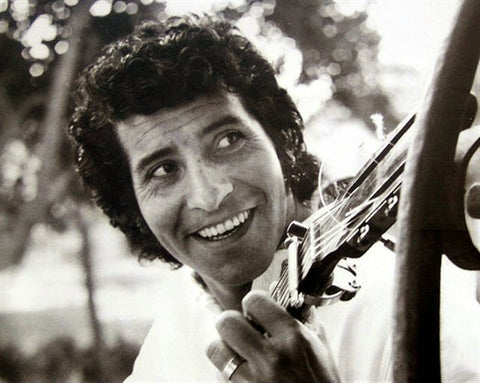\n\nOne of Chilé's national heroes, **Víctor Jara** was a martyred nueva-canción folk singer and songwriter who was victim of the bloody US-funded Pinochet coup and horrific ensuing violence. He was murdered and his body thrown into the street. \n\nThis post honoring Jara on his birthday could also be considered a \"fuck you\" to the United States' continued program of destabilizing countries around the globe for the benefit of fat cats at the top of the stinking, rotting capitalist pile of garbage. \n\nGrowing up very poor, his violent father left the family but his mother encouraged education before she died in 1950. He studied theater and started singing in the mid-'50s and joined the Communist Party in the early '60s after visiting Cuba and the Soviet Union. He befriended Violetta Parra and Phil Ochs and his songs grew increasingly directly political, defending the poor and demanding justice. \n\nHe aligned himself with Salvador Allende and wrote songs based on Pablo Neruda's poetry. As someone looked at as a cultural leader and organizer, he was among thousands targeted by Pinochet's henchmen and was imprisoned in the national football stadium on Sept 11, '73 and was tortured before execution. Many of his master tapes were destroyed and his wife had to leave the country. Since then there have been countless tributes to him, film & stage works about him and hundreds of artists inspired by his life and work.",
"filePath": "content/posts/victor-jara-sept-28-1932-sept-16-1973.md",
"digest": "61fbbf5d99459860",
"rendered": {
"html": "<p><img src=\"/images/victor-jara_large.jpg\" alt=\"\"></p>\n<p>One of Chilé’s national heroes, <strong>Víctor Jara</strong> was a martyred nueva-canción folk singer and songwriter who was victim of the bloody US-funded Pinochet coup and horrific ensuing violence. He was murdered and his body thrown into the street.</p>\n<p>This post honoring Jara on his birthday could also be considered a “fuck you” to the United States’ continued program of destabilizing countries around the globe for the benefit of fat cats at the top of the stinking, rotting capitalist pile of garbage.</p>\n<p>Growing up very poor, his violent father left the family but his mother encouraged education before she died in 1950. He studied theater and started singing in the mid-’50s and joined the Communist Party in the early ’60s after visiting Cuba and the Soviet Union. He befriended Violetta Parra and Phil Ochs and his songs grew increasingly directly political, defending the poor and demanding justice.</p>\n<p>He aligned himself with Salvador Allende and wrote songs based on Pablo Neruda’s poetry. As someone looked at as a cultural leader and organizer, he was among thousands targeted by Pinochet’s henchmen and was imprisoned in the national football stadium on Sept 11, ‘73 and was tortured before execution. Many of his master tapes were destroyed and his wife had to leave the country. Since then there have been countless tributes to him, film & stage works about him and hundreds of artists inspired by his life and work.</p>",
"metadata": {
"headings": [],
"localImagePaths": [],
"remoteImagePaths": [],
"frontmatter": {
"web-scraper-order": "1746562138-500",
"web-scraper-start-url": "https://peaceandrhythm.com",
"title": "Víctor Jara / Sept 28, 1932 - Sept 16, 1973",
"pagination": "https://www.peaceandrhythm.com/?page=12",
"date": "September 28, 2017",
"post": "Víctor Jara / Sept 28, 1932 - Sept 16, 1973",
"post-href": "https://www.peaceandrhythm.com/blogs/news/victor-jara-sept-28-1932-sept-16-1973",
"slug": "victor-jara-sept-28-1932-sept-16-1973"
},
"imagePaths": []
}
},
"collection": "blog"
},
{
"id": "andre-tanker-sept-25-1941-feb-28-2003",
"data": {
"title": "André Tanker / Sept 25, 1941 - Feb 28, 2003",
"slug": "andre-tanker-sept-25-1941-feb-28-2003",
"date": "2017-09-25T00:00:00.000Z"
},
"body": "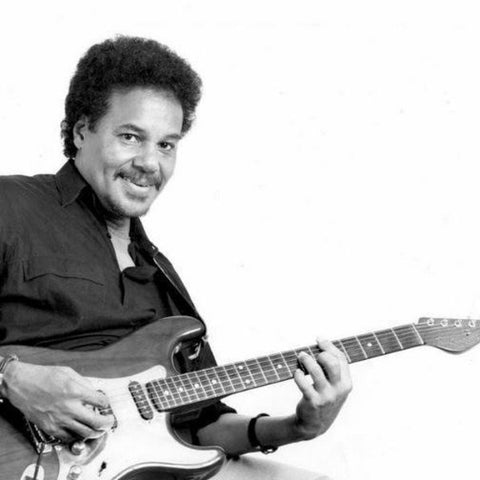\n\nHappy birthday to Trinidadian composer **André Tanker** , the \"Bob Dyan of T&T\". Born in Port-of-Spain, he started playing the steelpan at 7 and as a teenager learned guitar and cuatro. He also played vibraphone and harmonica. \n\nHe worked as an arranger for the Invaders Steel Orchestra, who were based in his neighborhood. His own Hilton Flamingos were a steady-working hotel band in the late '50s and early '60s. His late '60s & '70s work fused Caribbean folk music, Indian \"chutney\" music, jazz, Yoruba drumming, funk and black power themes, with Mongo Santamaría being a major influence. \n\nHe scored the music for the film _Bim_ in '73, a major landmark of Caribbean cinema. He also wrote for theater productions. In later years he produced rapso records. It was his tune \"River Come Down\" (reissued on a Soundway 45) that brought me to his music and further exploration yielded sweet sonic fruit.",
"filePath": "content/posts/andre-tanker-sept-25-1941-feb-28-2003.md",
"digest": "f7ba47e1c868d02a",
"rendered": {
"html": "<p><img src=\"/images/600x600_409314e2-346b-40f1-82e1-05b34dfa4003_large.jpg\" alt=\"\"></p>\n<p>Happy birthday to Trinidadian composer <strong>André Tanker</strong> , the “Bob Dyan of T&T”. Born in Port-of-Spain, he started playing the steelpan at 7 and as a teenager learned guitar and cuatro. He also played vibraphone and harmonica.</p>\n<p>He worked as an arranger for the Invaders Steel Orchestra, who were based in his neighborhood. His own Hilton Flamingos were a steady-working hotel band in the late ’50s and early ’60s. His late ’60s & ’70s work fused Caribbean folk music, Indian “chutney” music, jazz, Yoruba drumming, funk and black power themes, with Mongo Santamaría being a major influence.</p>\n<p>He scored the music for the film <em>Bim</em> in ‘73, a major landmark of Caribbean cinema. He also wrote for theater productions. In later years he produced rapso records. It was his tune “River Come Down” (reissued on a Soundway 45) that brought me to his music and further exploration yielded sweet sonic fruit.</p>",
"metadata": {
"headings": [],
"localImagePaths": [],
"remoteImagePaths": [],
"frontmatter": {
"web-scraper-order": "1746562124-494",
"web-scraper-start-url": "https://peaceandrhythm.com",
"title": "André Tanker / Sept 25, 1941 - Feb 28, 2003",
"pagination": "https://www.peaceandrhythm.com/?page=13",
"date": "September 25, 2017",
"post": "André Tanker / Sept 25, 1941 - Feb 28, 2003",
"post-href": "https://www.peaceandrhythm.com/blogs/news/andre-tanker-sept-25-1941-feb-28-2003",
"slug": "andre-tanker-sept-25-1941-feb-28-2003"
},
"imagePaths": []
}
},
"collection": "blog"
},
{
"id": "hugo-blanco-sept-25-1940-june-14-2015",
"data": {
"title": "Hugo Blanco / Sept 25, 1940 - June 14, 2015",
"slug": "hugo-blanco-sept-25-1940-june-14-2015",
"date": "2017-09-25T00:00:00.000Z"
},
"body": "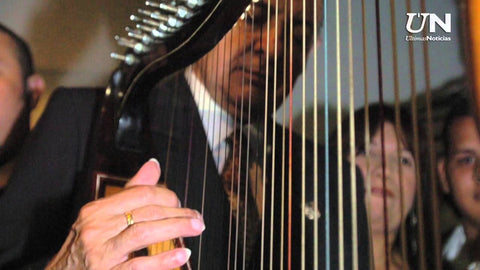\n\nHappy birthday to **Hugo Blanco** , one of the greats of Venezuelan music and the South American harp. The author of \"Moliendo Café\", written in 1958 and now a \"world music\" standard, Blanco was born in Caracas and learned to play the cuatro at 15. \n\nHe fused Venezuelan folk music such as _gaita_ and _joropo_ with influences from Cuba and beyond. In the '60s he also introduced ska to Venezuela with his group Las Cuatro Monedas. Other notable songs of his include \"La Vecina\", which was featured in the _Miami Vice_ TV show, and \"La Rosa Blanca\", which I first heard via a DJ-oriented 12\" on the Sofrito label and which mesmerized me and my dance party patrons. He was also known for his collaborations with Grammy-winning composer Simón Díaz.",
"filePath": "content/posts/hugo-blanco-sept-25-1940-june-14-2015.md",
"digest": "866571fedff4d92e",
"rendered": {
"html": "<p><img src=\"/images/maxresdefault_e6dc2f85-217d-40da-a994-fd9df7324fb7_large.jpg\" alt=\"\"></p>\n<p>Happy birthday to <strong>Hugo Blanco</strong> , one of the greats of Venezuelan music and the South American harp. The author of “Moliendo Café”, written in 1958 and now a “world music” standard, Blanco was born in Caracas and learned to play the cuatro at 15.</p>\n<p>He fused Venezuelan folk music such as <em>gaita</em> and <em>joropo</em> with influences from Cuba and beyond. In the ’60s he also introduced ska to Venezuela with his group Las Cuatro Monedas. Other notable songs of his include “La Vecina”, which was featured in the <em>Miami Vice</em> TV show, and “La Rosa Blanca”, which I first heard via a DJ-oriented 12” on the Sofrito label and which mesmerized me and my dance party patrons. He was also known for his collaborations with Grammy-winning composer Simón Díaz.</p>",
"metadata": {
"headings": [],
"localImagePaths": [],
"remoteImagePaths": [],
"frontmatter": {
"web-scraper-order": "1746562122-493",
"web-scraper-start-url": "https://peaceandrhythm.com",
"title": "Hugo Blanco / Sept 25, 1940 - June 14, 2015",
"pagination": "https://www.peaceandrhythm.com/?page=14",
"date": "September 25, 2017",
"post": "Hugo Blanco / Sept 25, 1940 - June 14, 2015",
"post-href": "https://www.peaceandrhythm.com/blogs/news/hugo-blanco-sept-25-1940-june-14-2015",
"slug": "hugo-blanco-sept-25-1940-june-14-2015"
},
"imagePaths": []
}
},
"collection": "blog"
},
{
"id": "sam-rivers-sept-25-1923-dec-26-2011",
"data": {
"title": "Sam Rivers / Sept 25, 1923 - Dec 26, 2011",
"slug": "sam-rivers-sept-25-1923-dec-26-2011",
"date": "2017-09-25T00:00:00.000Z"
},
"body": "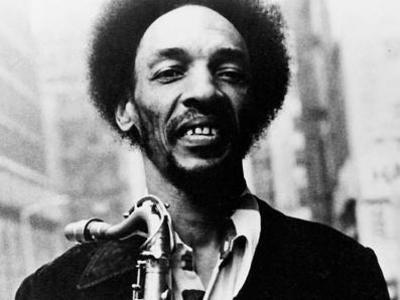\n\nOne of my favorite multi-reed improvisors, **Sam Rivers** was born on this day in 1923. He came from Oklahoma, his father and grandfather were gospel singers and helped give little Sammy the music bug. \n\nAfter some time as a youth in Chicago & Little Rock, he started his professional career on the West Coast in the '40s, playing in Jimmy Witherspoon's band, as well as with Quincy Jones. In Boston he started working with teenage drummer Tony Williams, who in turn brought him into the Miles Davis Quintet in '64, if only for a brief spell (captured on the _Miles In Tokyo_ album). But he was too \"out\" for Miles at the time, so he was fired and Wayne Shorter came in. \n\nRivers put out a string of great records for Blue Note, including the classic _Fuschia Swing Song_ (which includes the Rivers-composed standard \"Beatrice\"), as well as sideman dates for the label with Larry Young, Bobby Hutcherson (the amazing _Dialogue_), Andrew Hill and Williams. He worked with Cecil Taylor in '69 and in the '70s with Don Pullen, Barry Altschul, James Newton and on David Holland's classic _Conference of the Birds_. \n\nHe signed to Impulse! and cut the flowing live trio dates _Hues_ and _Streams_ , as well as _Sizzle_ and the great big-band album _Crystals_. It was during this period that he was heavily involved in the NYC \"loft-jazz\" scene, even running the Studio Rivbea venue and helping lead the avant-garde of the era. In the '80s he worked with Steve McCraven and recorded the underrated _Contrasts_ for ECM. \n\nThe late '80s saw him contributing to three great Latin-jazz albums by Hilton Ruiz, records that are common but very groovy. The '90s & 2000s found him leading large groups in Florida and kicking off another busy recording spree with James \"Blood\" Ulmer, Reggie Workman, Jason Moran, Steven Bernstein, Adam Rudolph, Dizzy Gillespie and others. \n\nHe was bestowed the Vision Festival's Lifetime Achievement honor in 2006. An extremely talented and versatile multi-instrumentalist, fluid on soprano, tenor, flute, bass clarinet, harmonica, viola and piano, he was one of the most significant avant-jazz artists the world has seen.",
"filePath": "content/posts/sam-rivers-sept-25-1923-dec-26-2011.md",
"digest": "2d86f33d11b90b43",
"rendered": {
"html": "<p><img src=\"/images/060112SamRivers_large.jpg\" alt=\"\"></p>\n<p>One of my favorite multi-reed improvisors, <strong>Sam Rivers</strong> was born on this day in 1923. He came from Oklahoma, his father and grandfather were gospel singers and helped give little Sammy the music bug.</p>\n<p>After some time as a youth in Chicago & Little Rock, he started his professional career on the West Coast in the ’40s, playing in Jimmy Witherspoon’s band, as well as with Quincy Jones. In Boston he started working with teenage drummer Tony Williams, who in turn brought him into the Miles Davis Quintet in ‘64, if only for a brief spell (captured on the <em>Miles In Tokyo</em> album). But he was too “out” for Miles at the time, so he was fired and Wayne Shorter came in.</p>\n<p>Rivers put out a string of great records for Blue Note, including the classic <em>Fuschia Swing Song</em> (which includes the Rivers-composed standard “Beatrice”), as well as sideman dates for the label with Larry Young, Bobby Hutcherson (the amazing <em>Dialogue</em>), Andrew Hill and Williams. He worked with Cecil Taylor in ‘69 and in the ’70s with Don Pullen, Barry Altschul, James Newton and on David Holland’s classic <em>Conference of the Birds</em>.</p>\n<p>He signed to Impulse! and cut the flowing live trio dates <em>Hues</em> and <em>Streams</em> , as well as <em>Sizzle</em> and the great big-band album <em>Crystals</em>. It was during this period that he was heavily involved in the NYC “loft-jazz” scene, even running the Studio Rivbea venue and helping lead the avant-garde of the era. In the ’80s he worked with Steve McCraven and recorded the underrated <em>Contrasts</em> for ECM.</p>\n<p>The late ’80s saw him contributing to three great Latin-jazz albums by Hilton Ruiz, records that are common but very groovy. The ’90s & 2000s found him leading large groups in Florida and kicking off another busy recording spree with James “Blood” Ulmer, Reggie Workman, Jason Moran, Steven Bernstein, Adam Rudolph, Dizzy Gillespie and others.</p>\n<p>He was bestowed the Vision Festival’s Lifetime Achievement honor in 2006. An extremely talented and versatile multi-instrumentalist, fluid on soprano, tenor, flute, bass clarinet, harmonica, viola and piano, he was one of the most significant avant-jazz artists the world has seen.</p>",
"metadata": {
"headings": [],
"localImagePaths": [],
"remoteImagePaths": [],
"frontmatter": {
"web-scraper-order": "1746562127-495",
"web-scraper-start-url": "https://peaceandrhythm.com",
"title": "Sam Rivers / Sept 25, 1923 - Dec 26, 2011",
"pagination": "https://www.peaceandrhythm.com/?page=13",
"date": "September 25, 2017",
"post": "Sam Rivers / Sept 25, 1923 - Dec 26, 2011",
"post-href": "https://www.peaceandrhythm.com/blogs/news/sam-rivers-sept-25-1923-dec-26-2011",
"slug": "sam-rivers-sept-25-1923-dec-26-2011"
},
"imagePaths": []
}
},
"collection": "blog"
},
{
"id": "blind-lemon-jefferson-sept-24-1893-dec-19-1929",
"data": {
"title": "Blind Lemon Jefferson / Sept 24, 1893 - Dec 19, 1929",
"slug": "blind-lemon-jefferson-sept-24-1893-dec-19-1929",
"date": "2017-09-24T00:00:00.000Z"
},
"body": "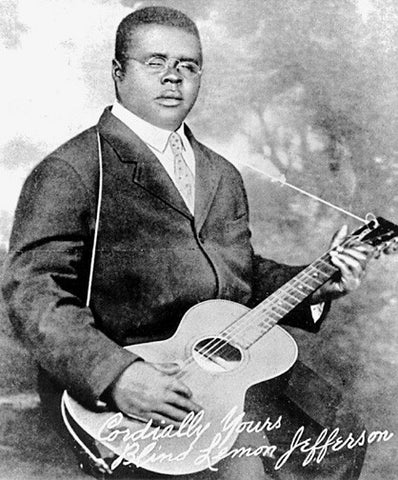\n\nPerhaps the first country blues star and indisputably the father of Texas style blues, the unique guitar stylist and impressive singer Lemon Henry Jefferson (aka \"**Blind Lemon Jefferson** \") was born without sight to a sharecropping family from Texas. He began playing guitar at 19 and soon after he befriended and played a bunch with Lead Belly in Dallas. \n\nIn 1917 he hired young T-Bone Walker as a guide and it was Jefferson who was his guitar teacher. (He also taught Josh White). He made his first recordings in '25, gospel sides released as by \"Deacon L.J. Bates\". In '26 he first released tunes under his own name (\"Booster Blues\" / \"Dry Southern Blues\") and he became quite popular. \n\nHe cut over 100 records and toured via his own car with a hired chauffeur all over the South and up to Chicago. A major blues and gospel songwriter, his tunes have been covered countless times by the Beatles, Bob Dylan, Carl Perkins, Grateful Dead, BB King, Counting Crows, Laibach and many, many, many more. His death at 36 remains a suspicious mystery. \"See That My Grave Is Kept Clean\", the song states.",
"filePath": "content/posts/blind-lemon-jefferson-sept-24-1893-dec-19-1929.md",
"digest": "10b5c469d3dffc44",
"rendered": {
"html": "<p><img src=\"/images/Blindlemonjeffersoncirca1926_large.jpg\" alt=\"\"></p>\n<p>Perhaps the first country blues star and indisputably the father of Texas style blues, the unique guitar stylist and impressive singer Lemon Henry Jefferson (aka “<strong>Blind Lemon Jefferson</strong> ”) was born without sight to a sharecropping family from Texas. He began playing guitar at 19 and soon after he befriended and played a bunch with Lead Belly in Dallas.</p>\n<p>In 1917 he hired young T-Bone Walker as a guide and it was Jefferson who was his guitar teacher. (He also taught Josh White). He made his first recordings in ‘25, gospel sides released as by “Deacon L.J. Bates”. In ‘26 he first released tunes under his own name (“Booster Blues” / “Dry Southern Blues”) and he became quite popular.</p>\n<p>He cut over 100 records and toured via his own car with a hired chauffeur all over the South and up to Chicago. A major blues and gospel songwriter, his tunes have been covered countless times by the Beatles, Bob Dylan, Carl Perkins, Grateful Dead, BB King, Counting Crows, Laibach and many, many, many more. His death at 36 remains a suspicious mystery. “See That My Grave Is Kept Clean”, the song states.</p>",
"metadata": {
"headings": [],
"localImagePaths": [],
"remoteImagePaths": [],
"frontmatter": {
"web-scraper-order": "1746562118-491",
"web-scraper-start-url": "https://peaceandrhythm.com",
"title": "Blind Lemon Jefferson / Sept 24, 1893 - Dec 19, 1929",
"pagination": "https://www.peaceandrhythm.com/?page=14",
"date": "September 24, 2017",
"post": "Blind Lemon Jefferson / Sept 24, 1893 - Dec 19, 1929",
"post-href": "https://www.peaceandrhythm.com/blogs/news/blind-lemon-jefferson-sept-24-1893-dec-19-1929",
"slug": "blind-lemon-jefferson-sept-24-1893-dec-19-1929"
},
"imagePaths": []
}
},
"collection": "blog"
},
{
"id": "fats-navarro-sept-24-1923-july-6-1950",
"data": {
"title": "Fats Navarro / Sept 24, 1923 - July 6, 1950",
"slug": "fats-navarro-sept-24-1923-july-6-1950",
"date": "2017-09-24T00:00:00.000Z"
},
"body": "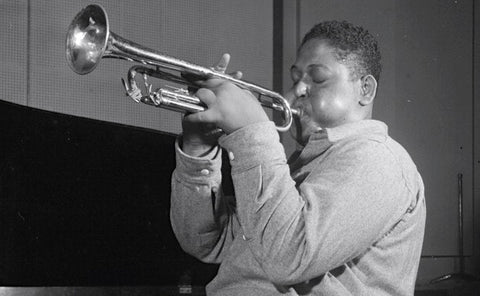\n\nHappy birthday to the bop trumpeter **Fats Navarro** , good friend of Charles Mingus and a huge influence on Clifford Brown before Navarro's short life ended at just 26. \n\nOur Afro-Cuban-Chinese hero was from Key West and played in Florida and Cincinnati to begin his pro career. To Kansas City in '44, he started playing in the swing band of Andy Kirk before settling in NYC in '46. He joined Billy Eckstine's great band as well as participating in the bebop revolution with Charlie Parker, Bud Powell, Tadd Dameron, Kenny Clarke and others. \n\nAs a bi-lingual Latino, he also spent time jamming with the Cuban bands in NYC. His health problems, due to heroin addiction, weight gain and TB, took over and he was gone much too early. His resourceful, melodic style shone bright in the smaller bebop combos and he could play sparklingly in a high velocity setting. Despite appearing on many records (and all the jam session tapes that have surfaced) he never really made a record under his own name.",
"filePath": "content/posts/fats-navarro-sept-24-1923-july-6-1950.md",
"digest": "13b1fbb79de95682",
"rendered": {
"html": "<p><img src=\"/images/Fats_Navarro1_large.jpg\" alt=\"\"></p>\n<p>Happy birthday to the bop trumpeter <strong>Fats Navarro</strong> , good friend of Charles Mingus and a huge influence on Clifford Brown before Navarro’s short life ended at just 26.</p>\n<p>Our Afro-Cuban-Chinese hero was from Key West and played in Florida and Cincinnati to begin his pro career. To Kansas City in ‘44, he started playing in the swing band of Andy Kirk before settling in NYC in ‘46. He joined Billy Eckstine’s great band as well as participating in the bebop revolution with Charlie Parker, Bud Powell, Tadd Dameron, Kenny Clarke and others.</p>\n<p>As a bi-lingual Latino, he also spent time jamming with the Cuban bands in NYC. His health problems, due to heroin addiction, weight gain and TB, took over and he was gone much too early. His resourceful, melodic style shone bright in the smaller bebop combos and he could play sparklingly in a high velocity setting. Despite appearing on many records (and all the jam session tapes that have surfaced) he never really made a record under his own name.</p>",
"metadata": {
"headings": [],
"localImagePaths": [],
"remoteImagePaths": [],
"frontmatter": {
"web-scraper-order": "1746562120-492",
"web-scraper-start-url": "https://peaceandrhythm.com",
"title": "Fats Navarro / Sept 24, 1923 - July 6, 1950",
"pagination": "https://www.peaceandrhythm.com/?page=14",
"date": "September 24, 2017",
"post": "Fats Navarro / Sept 24, 1923 - July 6, 1950",
"post-href": "https://www.peaceandrhythm.com/blogs/news/fats-navarro-sept-24-1923-july-6-1950",
"slug": "fats-navarro-sept-24-1923-july-6-1950"
},
"imagePaths": []
}
},
"collection": "blog"
},
{
"id": "jesse-ed-davis-sept-21-1944-june-22-1988",
"data": {
"title": "Jesse Ed Davis / Sept 21, 1944 - June 22, 1988",
"slug": "jesse-ed-davis-sept-21-1944-june-22-1988",
"date": "2017-09-21T00:00:00.000Z"
},
"body": "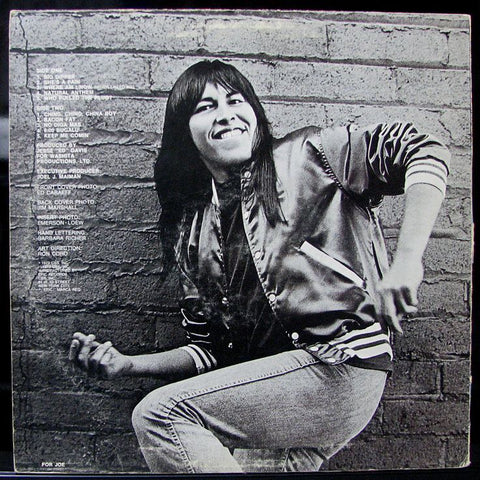\n\nOne of the most-called session men of his day, the Comanche/Kiowa tribal guitarist/pianist **Jesse Ed Davis** was born on this day in 1944. His father Jesse was a well-known \"True Indian\" painter. The younger Davis got his musical career started in his native Oklahoma in a band in the late '50s with future Blood Sweat & Tears vocalist Jerry Fisher. In the mid-'60s he went on the road as a member of Conway Twitty's band before settling in California. \n\nThrough friends Leon Russell and Levon Helm he got acquainted with the studio scene and started working as a session man/secret weapon. He joined Taj Mahal's band from about '68-71 and was a member of Asylum Choir along with Russell and MG's bassist Duck Dunn. With his diverse abilities with slide guitar, blues, rock, country, jazz and more he continued session work for Albert King, Bob Dylan, John Lee Hooker, Willie Nelson, most of the ex-Beatles, The Faces, Rod Stewart, Eric Clapton, Keith Moon, Steve Miller, Jackson Browne, Neil Diamond, Leonard Cohen (also born on this day) and many others. He was featured prominently on John Lennon's albums, as well as producing ex-Byrd Gene Clark. \n\nDavis himself made a few well-regarded albums in the early '70s that featured guests like Clapton and Russell. He cut a collaboration with John Trudell in the Graffiti Band in the '80s. But the drugs that plagued him for many years finally took him away at only 43.",
"filePath": "content/posts/jesse-ed-davis-sept-21-1944-june-22-1988.md",
"digest": "12f989de4d5a0592",
"rendered": {
"html": "<p><img src=\"/images/cbf1ca80f399a6c047ed98ac7c9ce019_large.jpg\" alt=\"\"></p>\n<p>One of the most-called session men of his day, the Comanche/Kiowa tribal guitarist/pianist <strong>Jesse Ed Davis</strong> was born on this day in 1944. His father Jesse was a well-known “True Indian” painter. The younger Davis got his musical career started in his native Oklahoma in a band in the late ’50s with future Blood Sweat & Tears vocalist Jerry Fisher. In the mid-’60s he went on the road as a member of Conway Twitty’s band before settling in California.</p>\n<p>Through friends Leon Russell and Levon Helm he got acquainted with the studio scene and started working as a session man/secret weapon. He joined Taj Mahal’s band from about ‘68-71 and was a member of Asylum Choir along with Russell and MG’s bassist Duck Dunn. With his diverse abilities with slide guitar, blues, rock, country, jazz and more he continued session work for Albert King, Bob Dylan, John Lee Hooker, Willie Nelson, most of the ex-Beatles, The Faces, Rod Stewart, Eric Clapton, Keith Moon, Steve Miller, Jackson Browne, Neil Diamond, Leonard Cohen (also born on this day) and many others. He was featured prominently on John Lennon’s albums, as well as producing ex-Byrd Gene Clark.</p>\n<p>Davis himself made a few well-regarded albums in the early ’70s that featured guests like Clapton and Russell. He cut a collaboration with John Trudell in the Graffiti Band in the ’80s. But the drugs that plagued him for many years finally took him away at only 43.</p>",
"metadata": {
"headings": [],
"localImagePaths": [],
"remoteImagePaths": [],
"frontmatter": {
"web-scraper-order": "1746562113-489",
"web-scraper-start-url": "https://peaceandrhythm.com",
"title": "Jesse Ed Davis / Sept 21, 1944 - June 22, 1988",
"pagination": "https://www.peaceandrhythm.com/?page=14",
"date": "September 21, 2017",
"post": "Jesse Ed Davis / Sept 21, 1944 - June 22, 1988",
"post-href": "https://www.peaceandrhythm.com/blogs/news/jesse-ed-davis-sept-21-1944-june-22-1988",
"slug": "jesse-ed-davis-sept-21-1944-june-22-1988"
},
"imagePaths": []
}
},
"collection": "blog"
},
{
"id": "leonard-cohen-sept-21-1934-nov-7-2016",
"data": {
"title": "Leonard Cohen / Sept 21, 1934 - Nov 7, 2016",
"slug": "leonard-cohen-sept-21-1934-nov-7-2016",
"date": "2017-09-21T00:00:00.000Z"
},
"body": "\n\nOne of my very favorite wordsmiths, **Leonard Cohen** delivered some lyrics of the deepest and most imaginative variety, a man who could articulate any emotion in the heaviest and clearest poetic sense. No topic was off limits and no emotion was irrelevant.\n\nA Montreal native, Leonard began his career strictly as a poet (first published in '54) and novelist before delivering his debut album _Songs of Leonard Cohen_ in '67. The album shook the expectations of lyricists with its uninhibited display of pain, joy, sexuality, sadness and mysticism. Every serious singer/songwriter had to up their game after this monumental set of songs & stories.\n\nHis early sound could be described as \"folk\", but his influences throughout his recording career included jazz, blues and gospel, as well as folk styles of other worlds. Reportedly, Nico was a big influence on his music. \"Suzanne\" became a huge international hit (as sung by Judy Collins) and Leonard's songwriting and womanizing career was game on after that initial brush with notoriety.\n\nHis later material was heavily influenced by gospel, zen and spirituality. He also recorded topical matter, as well as songs about love, existentialism and drifting. Simply put, his words have greatly inspired me, despite the fact that I don't put lyrics first in my listening. You can have your Bob Dylan, I'll have my Leonard Cohen.\n\nThe words of my life:\n\n## The Stranger Song\n\n[Leonard Cohen](https://www.bing.com/search?q=leonard+cohen&filters=ufn%3a%22leonard+cohen%22+sid%3a%228e450e43-eb13-bc59-d705-27360289a1b6%22&FORM=SNAPST)\n\n_It's true that all the men you knew were dealers_ \n _Who said they were through with dealing_ \n _Every time you gave them shelter_ \n _I know that kind of man, it's hard to hold the hand of anyone_ \n _Who is reaching for the sky just to surrender_ \n _Who is reaching for the sky just to surrender_\n\n_And then sweeping up the jokers that he left behind_ \n _You find he did not leave you very much, not even laughter_ \n _Like any dealer he was watching for the card that is so high and wild_ \n _He'll never need to deal another_ \n _He was just some Joseph looking for a manger_ \n _He was just some Joseph looking for a manger_\n\n_And then leaning on your window sill_ \n _He'll say one day you caused his will_ \n _To weaken with your love and warmth and shelter_ \n _And then taking from his wallet_ \n _An old schedule of trains, he'll say_ \n _I told you when I came I was a stranger_\n\n_But now another stranger seems_ \n _To want you to ignore his dreams_ \n _As though they were the burden of some other_ \n _Oh, you've seen that man before_ \n _His golden arm dispatching cards_ \n _But now it's rusted from the elbows to the finger_ \n _And he wants to trade the game he plays for shelter_ \n _Yes, he wants to trade the game he knows for shelter_\n\n_Ah, you hate to see another tired man_ \n _Lay down his hand like he was giving up the holy game of poker_ \n _And while he talks his dreams to sleep you notice there's a highway_ \n _That is curling up like smoke above his shoulder_ \n _It's curling just like smoke above his shoulder_\n\n_You tell him to come in sit down_ \n _But something makes you turn around_ \n _The door is open you can't close your shelter_ \n _You try the handle of the road, it opens, do not be afraid_ \n _It's you my love, you who are the stranger_ \n _It is you my love, you who are the stranger_\n\n_Well, I've been waiting, I was sure_ \n _We'd meet between the trains we're waiting for_ \n _I think it's time to board another_ \n _Please understand, I never had a secret chart_ \n _To get me to the heart of this or any other matter_ \n _Well, he talks like this you don't know what he's after_ \n _When he speaks like this you don't know what he's after_\n\n_Let's meet tomorrow if you choose_ \n _Upon the shore, beneath the bridge_ \n _That they are building on some endless river_ \n _Then he leaves the platform for the sleeping car that's warm_ \n _You realize, he's only advertising one more shelter_ \n _And it comes to you, he never was a stranger_ \n _And you say okay, the bridge or someplace later_\n\n_And then sweeping up the jokers that he left behind_ \n _You find he did not leave you very much, not even laughter_ \n _Like any dealer he was watching for the card that is so high and wild_ \n _He'll never need to deal another_ \n _He was just some Joseph looking for a manger_ \n _He was just some Joseph looking for a manger_\n\n_And then leaning on your window sill_ \n _He'll say one day you caused his will_ \n _To weaken with your love and warmth and shelter_ \n _And then taking from his wallet_ \n _An old schedule of trains, he'll say_ \n _I told you when I came I was a stranger_ \n _I told you when I came I was a stranger_ \n _I told you when I came I was a stranger_ \n _I told you when I came I was a stranger_",
"filePath": "content/posts/leonard-cohen-sept-21-1934-nov-7-2016.md",
"digest": "28cb2fe633462f17",
"rendered": {
"html": "<p><img src=\"/images/Leonard-Cohen-999x1024_large.jpg\" alt=\"\"></p>\n<p>One of my very favorite wordsmiths, <strong>Leonard Cohen</strong> delivered some lyrics of the deepest and most imaginative variety, a man who could articulate any emotion in the heaviest and clearest poetic sense. No topic was off limits and no emotion was irrelevant.</p>\n<p>A Montreal native, Leonard began his career strictly as a poet (first published in ‘54) and novelist before delivering his debut album <em>Songs of Leonard Cohen</em> in ‘67. The album shook the expectations of lyricists with its uninhibited display of pain, joy, sexuality, sadness and mysticism. Every serious singer/songwriter had to up their game after this monumental set of songs & stories.</p>\n<p>His early sound could be described as “folk”, but his influences throughout his recording career included jazz, blues and gospel, as well as folk styles of other worlds. Reportedly, Nico was a big influence on his music. “Suzanne” became a huge international hit (as sung by Judy Collins) and Leonard’s songwriting and womanizing career was game on after that initial brush with notoriety.</p>\n<p>His later material was heavily influenced by gospel, zen and spirituality. He also recorded topical matter, as well as songs about love, existentialism and drifting. Simply put, his words have greatly inspired me, despite the fact that I don’t put lyrics first in my listening. You can have your Bob Dylan, I’ll have my Leonard Cohen.</p>\n<p>The words of my life:</p>\n<h2 id=\"the-stranger-song\">The Stranger Song</h2>\n<p><a href=\"https://www.bing.com/search?q=leonard+cohen&filters=ufn%3a%22leonard+cohen%22+sid%3a%228e450e43-eb13-bc59-d705-27360289a1b6%22&FORM=SNAPST\">Leonard Cohen</a></p>\n<p><em>It’s true that all the men you knew were dealers</em><br>\n<em>Who said they were through with dealing</em><br>\n<em>Every time you gave them shelter</em><br>\n<em>I know that kind of man, it’s hard to hold the hand of anyone</em><br>\n<em>Who is reaching for the sky just to surrender</em><br>\n<em>Who is reaching for the sky just to surrender</em></p>\n<p><em>And then sweeping up the jokers that he left behind</em><br>\n<em>You find he did not leave you very much, not even laughter</em><br>\n<em>Like any dealer he was watching for the card that is so high and wild</em><br>\n<em>He’ll never need to deal another</em><br>\n<em>He was just some Joseph looking for a manger</em><br>\n<em>He was just some Joseph looking for a manger</em></p>\n<p><em>And then leaning on your window sill</em><br>\n<em>He’ll say one day you caused his will</em><br>\n<em>To weaken with your love and warmth and shelter</em><br>\n<em>And then taking from his wallet</em><br>\n<em>An old schedule of trains, he’ll say</em><br>\n<em>I told you when I came I was a stranger</em></p>\n<p><em>But now another stranger seems</em><br>\n<em>To want you to ignore his dreams</em><br>\n<em>As though they were the burden of some other</em><br>\n<em>Oh, you’ve seen that man before</em><br>\n<em>His golden arm dispatching cards</em><br>\n<em>But now it’s rusted from the elbows to the finger</em><br>\n<em>And he wants to trade the game he plays for shelter</em><br>\n<em>Yes, he wants to trade the game he knows for shelter</em></p>\n<p><em>Ah, you hate to see another tired man</em><br>\n<em>Lay down his hand like he was giving up the holy game of poker</em><br>\n<em>And while he talks his dreams to sleep you notice there’s a highway</em><br>\n<em>That is curling up like smoke above his shoulder</em><br>\n<em>It’s curling just like smoke above his shoulder</em></p>\n<p><em>You tell him to come in sit down</em><br>\n<em>But something makes you turn around</em><br>\n<em>The door is open you can’t close your shelter</em><br>\n<em>You try the handle of the road, it opens, do not be afraid</em><br>\n<em>It’s you my love, you who are the stranger</em><br>\n<em>It is you my love, you who are the stranger</em></p>\n<p><em>Well, I’ve been waiting, I was sure</em><br>\n<em>We’d meet between the trains we’re waiting for</em><br>\n<em>I think it’s time to board another</em><br>\n<em>Please understand, I never had a secret chart</em><br>\n<em>To get me to the heart of this or any other matter</em><br>\n<em>Well, he talks like this you don’t know what he’s after</em><br>\n<em>When he speaks like this you don’t know what he’s after</em></p>\n<p><em>Let’s meet tomorrow if you choose</em><br>\n<em>Upon the shore, beneath the bridge</em><br>\n<em>That they are building on some endless river</em><br>\n<em>Then he leaves the platform for the sleeping car that’s warm</em><br>\n<em>You realize, he’s only advertising one more shelter</em><br>\n<em>And it comes to you, he never was a stranger</em><br>\n<em>And you say okay, the bridge or someplace later</em></p>\n<p><em>And then sweeping up the jokers that he left behind</em><br>\n<em>You find he did not leave you very much, not even laughter</em><br>\n<em>Like any dealer he was watching for the card that is so high and wild</em><br>\n<em>He’ll never need to deal another</em><br>\n<em>He was just some Joseph looking for a manger</em><br>\n<em>He was just some Joseph looking for a manger</em></p>\n<p><em>And then leaning on your window sill</em><br>\n<em>He’ll say one day you caused his will</em><br>\n<em>To weaken with your love and warmth and shelter</em><br>\n<em>And then taking from his wallet</em><br>\n<em>An old schedule of trains, he’ll say</em><br>\n<em>I told you when I came I was a stranger</em><br>\n<em>I told you when I came I was a stranger</em><br>\n<em>I told you when I came I was a stranger</em><br>\n<em>I told you when I came I was a stranger</em></p>",
"metadata": {
"headings": [
{
"depth": 2,
"slug": "the-stranger-song",
"text": "The Stranger Song"
}
],
"localImagePaths": [],
"remoteImagePaths": [],
"frontmatter": {
"web-scraper-order": "1746562116-490",
"web-scraper-start-url": "https://peaceandrhythm.com",
"title": "Leonard Cohen / Sept 21, 1934 - Nov 7, 2016",
"pagination": "https://www.peaceandrhythm.com/?page=14",
"date": "September 21, 2017",
"post": "Leonard Cohen / Sept 21, 1934 - Nov 7, 2016",
"post-href": "https://www.peaceandrhythm.com/blogs/news/leonard-cohen-sept-21-1934-nov-7-2016",
"slug": "leonard-cohen-sept-21-1934-nov-7-2016"
},
"imagePaths": []
}
},
"collection": "blog"
},
{
"id": "billy-bang-sept-20-1947-april-11-2011",
"data": {
"title": "Billy Bang / Sept 20, 1947 - April 11, 2011",
"slug": "billy-bang-sept-20-1947-april-11-2011",
"date": "2017-09-20T00:00:00.000Z"
},
"body": "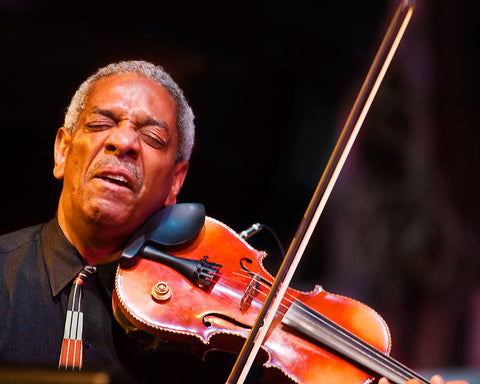\n\nHappy birthday to **Billy Bang** , avant-jazz violinist of the NYC downtown loft jazz scene of the '70s & '80s and beyond. A unique presence, his style merges contemporary \"classical\"/avant-garde, fire music/free-jazz, blues, swing and funk and he always chose great sideman. He could work well as a solo performer, in duos, jazz combos, as part of an orchestra or with dancers (he himself was a great dancer onstage). \n\nBorn William Walker in Alabama, he grew up in the Bronx & Harlem. He was given a violin because he was small. He learned to play it as a youth but quit it in high school. In the early 60s he switched to playing Afro-Cuban percussion and played drums with Arlo Guthrie while Bang went to high school in Western Massachusetts. \n\nAt 18, he dropped out to join the army, an experience that haunted him greatly, exasperating his schizophrenia. Upon discharge he became a radical and was involved with the anti-war movement and joined a revolutionary group, utilizing his weaponry training to procure guns for the cause. On a gun buy at a pawn shop he picked up a violin and decided to returned to the jazz scene, inspired by the fire music of the '60s. \n\nHe studied with Leroy Jenkins, found work with Sam Rivers and formed a few groups in the '70s, including the well-known String Trio of New York, the Survival Ensemble and his funk band Forbidden Planet. Around this time he started longtime associations with William Parker, Frank Lowe and Sun Ra and was quite active in the '80s playing with his own groups as well as with Marilyn Crispell, David Murray, Don Cherry, James \"Blood\" Ulmer, Bootsy Collins, Ronald Shannon Jackson's Decoding Society, Bill Laswell's Material, Charles Tyler as well as a time as a teacher. \n\nThe '90s and early 2000s saw him collaborating with Kahil El'Zabar, Roy Campbell, Michele Rosewoman, William Hooker, Ahmed Abdullah, Fred Anderson, Steve Swell, Barry Altschul and others. He guested on the World Saxophone Quartet's 2003 tribute to Jimi Hendrix (_Experience_). He also lived in Berlin for awhile, playing with bassist Sirone. \n\nHe reflected on his experience in Vietnam and with PTSD with two fantastic albums with other vets. He recorded for Soul Note, Justin Time, Hat Hut, Black Saint, CIMP, Anima, TUM and others before dying of lung cancer. He was a genuinely original artist who is much missed.",
"filePath": "content/posts/billy-bang-sept-20-1947-april-11-2011.md",
"digest": "7ddc532cedddddda",
"rendered": {
"html": "<p><img src=\"/images/billybang-11_large.jpg\" alt=\"\"></p>\n<p>Happy birthday to <strong>Billy Bang</strong> , avant-jazz violinist of the NYC downtown loft jazz scene of the ’70s & ’80s and beyond. A unique presence, his style merges contemporary “classical”/avant-garde, fire music/free-jazz, blues, swing and funk and he always chose great sideman. He could work well as a solo performer, in duos, jazz combos, as part of an orchestra or with dancers (he himself was a great dancer onstage).</p>\n<p>Born William Walker in Alabama, he grew up in the Bronx & Harlem. He was given a violin because he was small. He learned to play it as a youth but quit it in high school. In the early 60s he switched to playing Afro-Cuban percussion and played drums with Arlo Guthrie while Bang went to high school in Western Massachusetts.</p>\n<p>At 18, he dropped out to join the army, an experience that haunted him greatly, exasperating his schizophrenia. Upon discharge he became a radical and was involved with the anti-war movement and joined a revolutionary group, utilizing his weaponry training to procure guns for the cause. On a gun buy at a pawn shop he picked up a violin and decided to returned to the jazz scene, inspired by the fire music of the ’60s.</p>\n<p>He studied with Leroy Jenkins, found work with Sam Rivers and formed a few groups in the ’70s, including the well-known String Trio of New York, the Survival Ensemble and his funk band Forbidden Planet. Around this time he started longtime associations with William Parker, Frank Lowe and Sun Ra and was quite active in the ’80s playing with his own groups as well as with Marilyn Crispell, David Murray, Don Cherry, James “Blood” Ulmer, Bootsy Collins, Ronald Shannon Jackson’s Decoding Society, Bill Laswell’s Material, Charles Tyler as well as a time as a teacher.</p>\n<p>The ’90s and early 2000s saw him collaborating with Kahil El’Zabar, Roy Campbell, Michele Rosewoman, William Hooker, Ahmed Abdullah, Fred Anderson, Steve Swell, Barry Altschul and others. He guested on the World Saxophone Quartet’s 2003 tribute to Jimi Hendrix (<em>Experience</em>). He also lived in Berlin for awhile, playing with bassist Sirone.</p>\n<p>He reflected on his experience in Vietnam and with PTSD with two fantastic albums with other vets. He recorded for Soul Note, Justin Time, Hat Hut, Black Saint, CIMP, Anima, TUM and others before dying of lung cancer. He was a genuinely original artist who is much missed.</p>",
"metadata": {
"headings": [],
"localImagePaths": [],
"remoteImagePaths": [],
"frontmatter": {
"web-scraper-order": "1746562111-488",
"web-scraper-start-url": "https://peaceandrhythm.com",
"title": "Billy Bang / Sept 20, 1947 - April 11, 2011",
"pagination": "https://www.peaceandrhythm.com/?page=15",
"date": "September 20, 2017",
"post": "Billy Bang / Sept 20, 1947 - April 11, 2011",
"post-href": "https://www.peaceandrhythm.com/blogs/news/billy-bang-sept-20-1947-april-11-2011",
"slug": "billy-bang-sept-20-1947-april-11-2011"
},
"imagePaths": []
}
},
"collection": "blog"
},
{
"id": "eddie-bo-sept-20-1930-march-18-2009",
"data": {
"title": "Eddie Bo / Sept 20, 1930 - March 18, 2009",
"slug": "eddie-bo-sept-20-1930-march-18-2009",
"date": "2017-09-20T00:00:00.000Z"
},
"body": "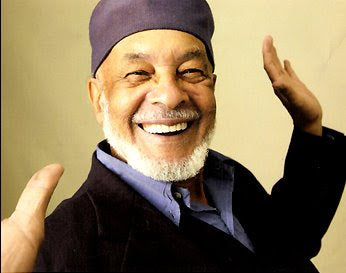\n\nOne of the New Orleans iconic producers, Edwin Bocage aka **Eddie Bo** brought a harder, grittier sound to the Crescent City in the '60s & '70s funk world. With his awesome drummer James Black and a stable of ripping vocalists, he cut several classics and remains a local legend. Himself a soulful singer and pianist, he composed, arranged and produced some great R&B, blues and funk over a long career in which he became one of the city's most prolific artists. \n\nHis family were builders and masons, as well as early NOLA jazz musicians. Bo's influences also include bebop and classical. In his 20s he formed a group that went on the road backing name musicians such as Lloyd Price, Smiley Lewis, Earl King, Ruth Brown, Big Joe Turner and others. At home in NOLA he released a bunch of singles starting in '55 on various labels, big or small (or his own): Ace, Chess, Apollo, Swan, Capitol, Seven B (where he was the main man) among many others. \n\nHe recorded under various names (how about that classic Roger & the Gypsies \"Pass The Hatchet\"? Bo.) to limited national success. He produced several artists: Art Neville, Irma Thomas, Chuck Carbo, Johnny Adams, Chris Kenner and others. \"Hook & Sling\" ('69) was Bo's biggest hit under his own name and quickly hit again with \"Check Your Bucket\" for his own Bo-Sound label. \n\nThe '70s saw him more focused on his carpentry skills, even building recording studios on hire. He released a couple of albums on his own label and worked with the Dirty Dozen Brass Band, Willy DeVille and The Louisiana Legends in the '80s & '90s. He opened his own cafe/music venue and helped repair damaged structures from Hurricane Katrina. His career was very much rooted in New Orleans but he was able to tour North America, Europe and even Pakistan.",
"filePath": "content/posts/eddie-bo-sept-20-1930-march-18-2009.md",
"digest": "4efe3956af7dc9fd",
"rendered": {
"html": "<p><img src=\"/images/BO_large.jpg\" alt=\"\"></p>\n<p>One of the New Orleans iconic producers, Edwin Bocage aka <strong>Eddie Bo</strong> brought a harder, grittier sound to the Crescent City in the ’60s & ’70s funk world. With his awesome drummer James Black and a stable of ripping vocalists, he cut several classics and remains a local legend. Himself a soulful singer and pianist, he composed, arranged and produced some great R&B, blues and funk over a long career in which he became one of the city’s most prolific artists.</p>\n<p>His family were builders and masons, as well as early NOLA jazz musicians. Bo’s influences also include bebop and classical. In his 20s he formed a group that went on the road backing name musicians such as Lloyd Price, Smiley Lewis, Earl King, Ruth Brown, Big Joe Turner and others. At home in NOLA he released a bunch of singles starting in ‘55 on various labels, big or small (or his own): Ace, Chess, Apollo, Swan, Capitol, Seven B (where he was the main man) among many others.</p>\n<p>He recorded under various names (how about that classic Roger & the Gypsies “Pass The Hatchet”? Bo.) to limited national success. He produced several artists: Art Neville, Irma Thomas, Chuck Carbo, Johnny Adams, Chris Kenner and others. “Hook & Sling” (‘69) was Bo’s biggest hit under his own name and quickly hit again with “Check Your Bucket” for his own Bo-Sound label.</p>\n<p>The ’70s saw him more focused on his carpentry skills, even building recording studios on hire. He released a couple of albums on his own label and worked with the Dirty Dozen Brass Band, Willy DeVille and The Louisiana Legends in the ’80s & ’90s. He opened his own cafe/music venue and helped repair damaged structures from Hurricane Katrina. His career was very much rooted in New Orleans but he was able to tour North America, Europe and even Pakistan.</p>",
"metadata": {
"headings": [],
"localImagePaths": [],
"remoteImagePaths": [],
"frontmatter": {
"web-scraper-order": "1746562109-487",
"web-scraper-start-url": "https://peaceandrhythm.com",
"title": "Eddie Bo / Sept 20, 1930 - March 18, 2009",
"pagination": "https://www.peaceandrhythm.com/?page=15",
"date": "September 20, 2017",
"post": "Eddie Bo / Sept 20, 1930 - March 18, 2009",
"post-href": "https://www.peaceandrhythm.com/blogs/news/eddie-bo-sept-20-1930-march-18-2009",
"slug": "eddie-bo-sept-20-1930-march-18-2009"
},
"imagePaths": []
}
},
"collection": "blog"
},
{
"id": "harry-whitaker-sept-19-1942-nov-17-2010",
"data": {
"title": "Harry Whitaker / Sept 19, 1942 - Nov 17, 2010",
"slug": "harry-whitaker-sept-19-1942-nov-17-2010",
"date": "2017-09-19T00:00:00.000Z"
},
"body": "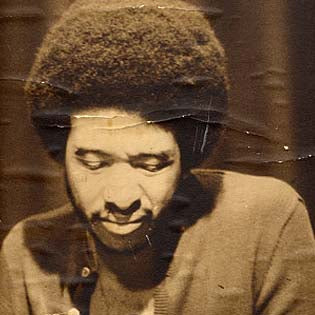\n\nHere's a nod to the underknown pianist **Harry Whitaker** , on his day of birth. Harry was more of a behind-the-scenes guy, best known for his work with Roy Ayers' Ubiquity (he composed the classic \"We Live In Brooklyn Baby\") and Roberta Flack (during her peak years). \n\nFrom Pensacola FL, he started playing piano at 5. His family moved later to Detroit, and he got his career started there with local gigs as a teenager. In 1960 he moved to NYC. He played with Slide Hampton in '65 before taking to playing on the road in various bands. He joined Ayers in '70 and was part of Roy's most creative phase. \n\nHe worked with Flack, Lloyd Price, Eugene McDaniel, Blood Sweat & Tears, Stephanie Mills and others. His rare groove classic, _Black Renaissance_ , came out in Japan in '76 on the Baystate label and was a heavy \"spiritual jazz\" classic, with free jazz and Latin and funk inspirations (Azar Lawrence, Woody Shaw and Billy Hart were in the band). His career blended pop, jazz, funk, R&B and gospel, and he spent much of his later years as a regular on the NYC jazz scene. He passed after a heart attack in 2010.",
"filePath": "content/posts/harry-whitaker-sept-19-1942-nov-17-2010.md",
"digest": "4aa29fc0db55abf5",
"rendered": {
"html": "<p><img src=\"/images/harry_headshot_large.jpg\" alt=\"\"></p>\n<p>Here’s a nod to the underknown pianist <strong>Harry Whitaker</strong> , on his day of birth. Harry was more of a behind-the-scenes guy, best known for his work with Roy Ayers’ Ubiquity (he composed the classic “We Live In Brooklyn Baby”) and Roberta Flack (during her peak years).</p>\n<p>From Pensacola FL, he started playing piano at 5. His family moved later to Detroit, and he got his career started there with local gigs as a teenager. In 1960 he moved to NYC. He played with Slide Hampton in ‘65 before taking to playing on the road in various bands. He joined Ayers in ‘70 and was part of Roy’s most creative phase.</p>\n<p>He worked with Flack, Lloyd Price, Eugene McDaniel, Blood Sweat & Tears, Stephanie Mills and others. His rare groove classic, <em>Black Renaissance</em> , came out in Japan in ‘76 on the Baystate label and was a heavy “spiritual jazz” classic, with free jazz and Latin and funk inspirations (Azar Lawrence, Woody Shaw and Billy Hart were in the band). His career blended pop, jazz, funk, R&B and gospel, and he spent much of his later years as a regular on the NYC jazz scene. He passed after a heart attack in 2010.</p>",
"metadata": {
"headings": [],
"localImagePaths": [],
"remoteImagePaths": [],
"frontmatter": {
"web-scraper-order": "1746562107-486",
"web-scraper-start-url": "https://peaceandrhythm.com",
"title": "Harry Whitaker / Sept 19, 1942 - Nov 17, 2010",
"pagination": "https://www.peaceandrhythm.com/?page=15",
"date": "September 19, 2017",
"post": "Harry Whitaker / Sept 19, 1942 - Nov 17, 2010",
"post-href": "https://www.peaceandrhythm.com/blogs/news/harry-whitaker-sept-19-1942-nov-17-2010",
"slug": "harry-whitaker-sept-19-1942-nov-17-2010"
},
"imagePaths": []
}
},
"collection": "blog"
},
{
"id": "hank-williams-sept-17-1923-jan-1-1953",
"data": {
"title": "Hank Williams / Sept 17, 1923 - Jan 1, 1953",
"slug": "hank-williams-sept-17-1923-jan-1-1953",
"date": "2017-09-17T00:00:00.000Z"
},
"body": "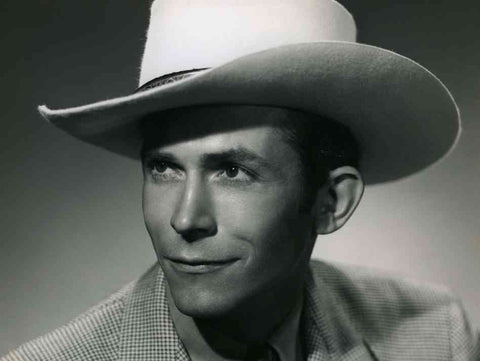\n\nOne of my very favorites of the honky/cracker artists, country music star **Hank Williams** had a soulful delivery and wrote some lasting classics. He came from Alabama and got his guitar lessons from a black street performer named Rufus \"Tee Tot\" Payne before getting his professional start in Montgomery in '37. He started out on the radio before signing a recording contract with MGM. He became very popular and was part of the _Grand Ole Opry_ for a brief period and made some television appearances.\n\nHe developed bad addictions to booze & painkillers (he was born with spinal problems) and they destroyed his life. He died on New Years Day '53 at 29, having released a total of thirty songs in his short life. He never knew how to read or notate music but was an important and influential songwriter with many classics: \"Your Cheatin' Heart\", \"Move It On Over\", \"I'm So Lonesome I Could Cry\", \"Hey Good Lookin\", \"Cold Cold Heart\", \"Moanin The Blues\", \"Jambalaya\" ([covered by the Meters!](https://youtu.be/YCCPbqqM9fk)), \"Settin' The Woods On Fire\", \"Honky Tonk Blues\" and others. \n\nBe warned that some later releases of his music tend to be ruined by strings and stereo reprocessing, etc. His son and grandson are involved in country, pop and heavy metal music, but Hank the first is the best of them all. A major, major architect of the country sound. His shit was authentic and I tend to not blame the country pioneers for the garbage that follows.",
"filePath": "content/posts/hank-williams-sept-17-1923-jan-1-1953.md",
"digest": "b985ceb34df6ce6f",
"rendered": {
"html": "<p><img src=\"/images/hank2-589dbc7c7e5c50a66b97ab60c86534f502134623-s6-c30_large.jpg\" alt=\"\"></p>\n<p>One of my very favorites of the honky/cracker artists, country music star <strong>Hank Williams</strong> had a soulful delivery and wrote some lasting classics. He came from Alabama and got his guitar lessons from a black street performer named Rufus “Tee Tot” Payne before getting his professional start in Montgomery in ‘37. He started out on the radio before signing a recording contract with MGM. He became very popular and was part of the <em>Grand Ole Opry</em> for a brief period and made some television appearances.</p>\n<p>He developed bad addictions to booze & painkillers (he was born with spinal problems) and they destroyed his life. He died on New Years Day ‘53 at 29, having released a total of thirty songs in his short life. He never knew how to read or notate music but was an important and influential songwriter with many classics: “Your Cheatin’ Heart”, “Move It On Over”, “I’m So Lonesome I Could Cry”, “Hey Good Lookin”, “Cold Cold Heart”, “Moanin The Blues”, “Jambalaya” (<a href=\"https://youtu.be/YCCPbqqM9fk\">covered by the Meters!</a>), “Settin’ The Woods On Fire”, “Honky Tonk Blues” and others.</p>\n<p>Be warned that some later releases of his music tend to be ruined by strings and stereo reprocessing, etc. His son and grandson are involved in country, pop and heavy metal music, but Hank the first is the best of them all. A major, major architect of the country sound. His shit was authentic and I tend to not blame the country pioneers for the garbage that follows.</p>",
"metadata": {
"headings": [],
"localImagePaths": [],
"remoteImagePaths": [],
"frontmatter": {
"web-scraper-order": "1746562102-484",
"web-scraper-start-url": "https://peaceandrhythm.com",
"title": "Hank Williams / Sept 17, 1923 - Jan 1, 1953",
"pagination": "https://www.peaceandrhythm.com/?page=15",
"date": "September 17, 2017",
"post": "Hank Williams / Sept 17, 1923 - Jan 1, 1953",
"post-href": "https://www.peaceandrhythm.com/blogs/news/hank-williams-sept-17-1923-jan-1-1953",
"slug": "hank-williams-sept-17-1923-jan-1-1953"
},
"imagePaths": []
}
},
"collection": "blog"
},
{
"id": "king-stitt-sept-17-1940-jan-31-2012",
"data": {
"title": "King Stitt / Sept 17, 1940 - Jan 31, 2012",
"slug": "king-stitt-sept-17-1940-jan-31-2012",
"date": "2017-09-17T00:00:00.000Z"
},
"body": "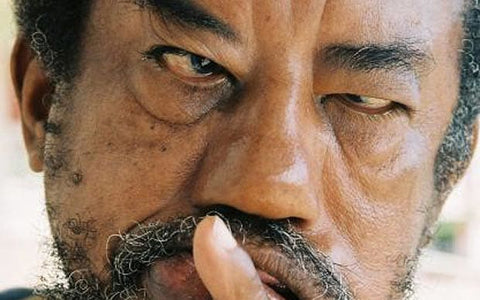\n\nHere's a shout-out to \"The Ugly One\", pioneering Jamaican dee-jay \"toaster\" Winston Sparkes aka **King Stitt**. Born with a unique face and a stuttering habit, he embraced these attributes and they became part of his public persona.\n\nHe got his start as an early deejay for Coxone Dodd's _Downbeat_ sound system in 1956 after being spotted by the OG deejay Count Machuki and went on to be a popular attraction during the ska years. In '69 he cut his first recordings for producer Clancy Eccles (not including some live action sound system recordings from '63 that weren't released until later).\n\nHe paved the way for the toasters to come and was considered the champion until U-Roy came along. He made a late career comeback in the 2000s, toasting over a Serge Gainsbourg song and made the festival rounds before his demise from prostate cancer.",
"filePath": "content/posts/king-stitt-sept-17-1940-jan-31-2012.md",
"digest": "ef82fafe30ebf527",
"rendered": {
"html": "<p><img src=\"/images/stitt_si_2130539a_large.jpg\" alt=\"\"></p>\n<p>Here’s a shout-out to “The Ugly One”, pioneering Jamaican dee-jay “toaster” Winston Sparkes aka <strong>King Stitt</strong>. Born with a unique face and a stuttering habit, he embraced these attributes and they became part of his public persona.</p>\n<p>He got his start as an early deejay for Coxone Dodd’s <em>Downbeat</em> sound system in 1956 after being spotted by the OG deejay Count Machuki and went on to be a popular attraction during the ska years. In ‘69 he cut his first recordings for producer Clancy Eccles (not including some live action sound system recordings from ‘63 that weren’t released until later).</p>\n<p>He paved the way for the toasters to come and was considered the champion until U-Roy came along. He made a late career comeback in the 2000s, toasting over a Serge Gainsbourg song and made the festival rounds before his demise from prostate cancer.</p>",
"metadata": {
"headings": [],
"localImagePaths": [],
"remoteImagePaths": [],
"frontmatter": {
"web-scraper-order": "1746562105-485",
"web-scraper-start-url": "https://peaceandrhythm.com",
"title": "King Stitt / Sept 17, 1940 - Jan 31, 2012",
"pagination": "https://www.peaceandrhythm.com/?page=15",
"date": "September 17, 2017",
"post": "King Stitt / Sept 17, 1940 - Jan 31, 2012",
"post-href": "https://www.peaceandrhythm.com/blogs/news/king-stitt-sept-17-1940-jan-31-2012",
"slug": "king-stitt-sept-17-1940-jan-31-2012"
},
"imagePaths": []
}
},
"collection": "blog"
},
{
"id": "b-b-king-sept-16-1925-may-14-2015",
"data": {
"title": "B.B. King / Sept 16, 1925 - May 14, 2015",
"slug": "b-b-king-sept-16-1925-may-14-2015",
"date": "2017-09-16T00:00:00.000Z"
},
"body": "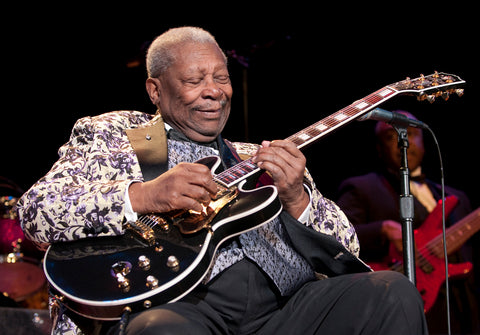\n\nHappy birthday to the lovable soul-blues icon **B.B. King**! A huge influence on so many electric blues guitarists & singers, soul artists as well as the rock generation, his style was immediately identifiable and his hit songs rank among the most loved in twentieth century music.\n\nFrom a sharecropping family in Indianola MS, he sang gospel in church and at 12 was given a guitar by his cousin Bukka White. He started his career locally in '43 and three years later moved to Memphis with White. He worked as a radio DJ and playing in clubs and recorded his early sides for a pre-Sun Records Sam Phillips.\n\nHe started some heavy touring and had a huge record in '52 with \"3 O'Clock Blues\" and his success continued to grow. In '56 he played 342 shows! By the time the '60s came he was a major attraction and already a blues icon. He toured with the Rolling Stones in '69 and had a huge, everlasting hit with \"The Thrill Is Gone\" in '70. That same year he played to inmates of Cook County Jail, with an album release following.\n\nIn the '70s his music included funk grooves. He continued to be a top concert attraction for the rest of his life, and in his lengthy career played with Eric Clapton, U2, Gary Moore, John Lee Hooker, George Duke, Etta James, Ray Charles, George Jones, Gloria Estefan, The Crusaders as well as his fellow Beale Streeters Johnny Ace & Bobby \"Blue\" Bland.\n\nHis stylistic range went from blues to soul to funk to country to jazz to ballads to rock to arrangements with strings. His other interests included flying--he was a pilot who used to fly to his own gigs\\--and his numerous business ventures. In '91 opened his BB King Blues Club in Memphis, with additional locations popping up through the years. He also was his own career manager and wrote an autobiography before diabetes took him away in 2015. He and his guitar Lucille were of the highest of guitar icons and influenced just about every axeman that came after.",
"filePath": "content/posts/b-b-king-sept-16-1925-may-14-2015.md",
"digest": "ba7c56e6c4b5d4b6",
"rendered": {
"html": "<p><img src=\"/images/BBKing_02092010_7670_large.jpg\" alt=\"\"></p>\n<p>Happy birthday to the lovable soul-blues icon <strong>B.B. King</strong>! A huge influence on so many electric blues guitarists & singers, soul artists as well as the rock generation, his style was immediately identifiable and his hit songs rank among the most loved in twentieth century music.</p>\n<p>From a sharecropping family in Indianola MS, he sang gospel in church and at 12 was given a guitar by his cousin Bukka White. He started his career locally in ‘43 and three years later moved to Memphis with White. He worked as a radio DJ and playing in clubs and recorded his early sides for a pre-Sun Records Sam Phillips.</p>\n<p>He started some heavy touring and had a huge record in ‘52 with “3 O’Clock Blues” and his success continued to grow. In ‘56 he played 342 shows! By the time the ’60s came he was a major attraction and already a blues icon. He toured with the Rolling Stones in ‘69 and had a huge, everlasting hit with “The Thrill Is Gone” in ‘70. That same year he played to inmates of Cook County Jail, with an album release following.</p>\n<p>In the ’70s his music included funk grooves. He continued to be a top concert attraction for the rest of his life, and in his lengthy career played with Eric Clapton, U2, Gary Moore, John Lee Hooker, George Duke, Etta James, Ray Charles, George Jones, Gloria Estefan, The Crusaders as well as his fellow Beale Streeters Johnny Ace & Bobby “Blue” Bland.</p>\n<p>His stylistic range went from blues to soul to funk to country to jazz to ballads to rock to arrangements with strings. His other interests included flying—he was a pilot who used to fly to his own gigs—and his numerous business ventures. In ‘91 opened his BB King Blues Club in Memphis, with additional locations popping up through the years. He also was his own career manager and wrote an autobiography before diabetes took him away in 2015. He and his guitar Lucille were of the highest of guitar icons and influenced just about every axeman that came after.</p>",
"metadata": {
"headings": [],
"localImagePaths": [],
"remoteImagePaths": [],
"frontmatter": {
"web-scraper-order": "1746562100-483",
"web-scraper-start-url": "https://peaceandrhythm.com",
"title": "B.B. King / Sept 16, 1925 - May 14, 2015",
"pagination": "https://www.peaceandrhythm.com/?page=16",
"date": "September 16, 2017",
"post": "B.B. King / Sept 16, 1925 - May 14, 2015",
"post-href": "https://www.peaceandrhythm.com/blogs/news/b-b-king-sept-16-1925-may-14-2015",
"slug": "b-b-king-sept-16-1925-may-14-2015"
},
"imagePaths": []
}
},
"collection": "blog"
},
{
"id": "julian-cannonball-adderley-sept-15-1928-aug-8-1975",
"data": {
"title": "Julian \"Cannonball\" Adderley / Sept 15, 1928 - Aug 8, 1975",
"slug": "julian-cannonball-adderley-sept-15-1928-aug-8-1975",
"date": "2017-09-15T00:00:00.000Z"
},
"body": "**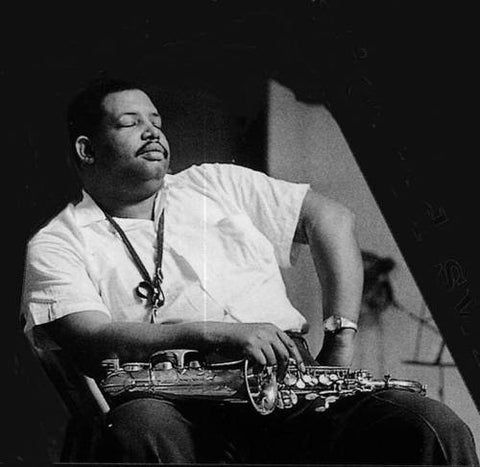**\n\n**Julian \"Cannonball\" Adderley** became one of the highly respected alto saxophonists of the hard bop and soul-jazz eras. Indeed, with his bluesy wail and accessible style he was one of jazz's most popular and visible artists in the late '60s and into the '70s before his death from a stroke.\n\nOriginally from Tampa, he and his brother Nat, a cornetist, grew up in Tallahassee FL, both of them earning early professional experience in the early '40s backing Ray Charles in Florida. Cannon moved to Ft Lauderdale for awhile before a move to NYC in '55, the year he first recorded as a leader. He first joined Miles Davis' group in '57 and was featured on _Kind of Blue_ and _Milestones_. His own album from '58, _Something Else_ (Blue Note), featured Miles as a sideman and is a bonafide jazz classic.\n\nCannon's own groups & sessions in the late '50s and '60s featured several great musicians, including Nat, John Coltrane, Yusef Lateef, Bill Evans, Joe Zawinul, Art Blakey and others. He started leading a big band in '61 (check _African Waltz_) and took in some bossa nova influences soon after. \"Mercy, Mercy, Mercy\" was a huge soul-jazz jukebox hit in '66 and his later work showed influences of pop, avant-garde and funk, even if sometimes the results sounded fadish, the tunes were still good. (Check out the groovy _Country Preacher_ album, a benefit for Rev Jesse Jackson's Operation Breadbasket). He also doubled on soprano for some situations.\n\n\"Jive Samba\", \"Sack O' Woe\", \"Walk Tall\" and brother Nat's \"Work Song\" were all big hits out of the book of Cannon's band. In his career, he also worked with Oscar Pettiford, Oscar Peterson, Sarah Vaughan, Sergio Mendes, Lou Rawls and many others.",
"filePath": "content/posts/julian-cannonball-adderley-sept-15-1928-aug-8-1975.md",
"digest": "69da90b3797370c2",
"rendered": {
"html": "<p><strong><img src=\"/images/cannonball_add_large.jpg\" alt=\"\"></strong></p>\n<p><strong>Julian “Cannonball” Adderley</strong> became one of the highly respected alto saxophonists of the hard bop and soul-jazz eras. Indeed, with his bluesy wail and accessible style he was one of jazz’s most popular and visible artists in the late ’60s and into the ’70s before his death from a stroke.</p>\n<p>Originally from Tampa, he and his brother Nat, a cornetist, grew up in Tallahassee FL, both of them earning early professional experience in the early ’40s backing Ray Charles in Florida. Cannon moved to Ft Lauderdale for awhile before a move to NYC in ‘55, the year he first recorded as a leader. He first joined Miles Davis’ group in ‘57 and was featured on <em>Kind of Blue</em> and <em>Milestones</em>. His own album from ‘58, <em>Something Else</em> (Blue Note), featured Miles as a sideman and is a bonafide jazz classic.</p>\n<p>Cannon’s own groups & sessions in the late ’50s and ’60s featured several great musicians, including Nat, John Coltrane, Yusef Lateef, Bill Evans, Joe Zawinul, Art Blakey and others. He started leading a big band in ‘61 (check <em>African Waltz</em>) and took in some bossa nova influences soon after. “Mercy, Mercy, Mercy” was a huge soul-jazz jukebox hit in ‘66 and his later work showed influences of pop, avant-garde and funk, even if sometimes the results sounded fadish, the tunes were still good. (Check out the groovy <em>Country Preacher</em> album, a benefit for Rev Jesse Jackson’s Operation Breadbasket). He also doubled on soprano for some situations.</p>\n<p>“Jive Samba”, “Sack O’ Woe”, “Walk Tall” and brother Nat’s “Work Song” were all big hits out of the book of Cannon’s band. In his career, he also worked with Oscar Pettiford, Oscar Peterson, Sarah Vaughan, Sergio Mendes, Lou Rawls and many others.</p>",
"metadata": {
"headings": [],
"localImagePaths": [],
"remoteImagePaths": [],
"frontmatter": {
"web-scraper-order": "1746562098-482",
"web-scraper-start-url": "https://peaceandrhythm.com",
"title": "Julian \"Cannonball\" Adderley / Sept 15, 1928 - Aug 8, 1975",
"pagination": "https://www.peaceandrhythm.com/?page=16",
"date": "September 15, 2017",
"post": "Julian \"Cannonball\" Adderley / Sept 15, 1928 - Aug 8, 1975",
"post-href": "https://www.peaceandrhythm.com/blogs/news/julian-cannonball-adderley-sept-15-1928-aug-8-1975",
"slug": "julian-cannonball-adderley-sept-15-1928-aug-8-1975"
},
"imagePaths": []
}
},
"collection": "blog"
},
{
"id": "cachao-sept-14-1918-march-22-2008",
"data": {
"title": "Cachao / Sept 14, 1918 - March 22, 2008",
"slug": "cachao-sept-14-1918-march-22-2008",
"date": "2017-09-14T00:00:00.000Z"
},
"body": "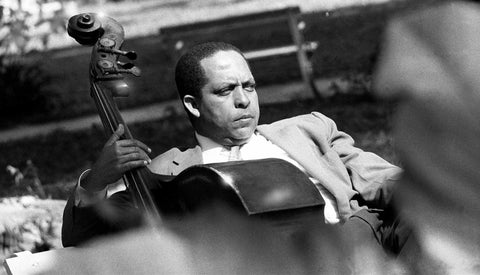\n\nThe greatest. \n\nBassist, composer, Cuban music figure, master of the _tumbao_ , inventor of Latin jazz, fine-tuner of the _charanga_ , Israel López \"**Cachao** \" Valdéz was born in Old Havana, into a family of bass players. He grew up in the house that Jose Martí used to live in. \n\nHe started at 8 on bongos, and was playing bass by age nine accompanying silent films. He received classical training and as a teenager joined Orquesta Filharmónica de La Habana, which included guest conductions by Stavinski & Villa-Lobos. He stayed thirty years with the orchestra. \n\nAlong with his brother Orestes \"Macho' López, he composed thousands of songs in the '30s-50s as part of Orquesta Arcaño y Sus Maravillas. They developed the _danzón_ into mambo, writing the OG \"Mambo\", as well as composing \"Chanchullo\" (which became \"Oye Cómo Va\"). He also played in José Fajardo's group in the '50s. \n\nThe famous 1957 descarga jam sessions led by Cachao virtually created the blueprint for modern salsa and Latin jazz. He went to Spain in '61 and then the US a couple years later where he became the hottest bassist in NYC for Latin music. Among his regular gig stays were with Machito and Candido. \n\nHe played on many mambo, jazz and salsa sessions and in his long career played with Bola de Nieve, Tata Güines, Kako, Bebo Valdés, Patato Valdés, Eddie Palmieri, Tito Rodriguez, Gloria Estefan, Hubert Laws, Dave Pike, Tito Puente, Chico O'Farrill and so many more. \n\nHe spent a lot of time in Las Vegas in the '70s, playing in hotels and nightclubs before hanging in Miami for much of the '80s. In '89 actor Andy Garcia produced some sessions that helped bring him back into popular focus. In 2000 Cachao premiered a huge project, _Mambo Mass_ , which combined classical, opera and Afro-Cuban music. He went on to release several acclaimed records and won a bunch of Grammys before passing away. He was the uncle of another famous musician, Orlando \"Cachaito\" López, bassist for Buena Vista Social Club and others.",
"filePath": "content/posts/cachao-sept-14-1918-march-22-2008.md",
"digest": "806f737b725ee3c5",
"rendered": {
"html": "<p><img src=\"/images/ccf765531b1b4ac105103dfdb271c44b_large.jpg\" alt=\"\"></p>\n<p>The greatest.</p>\n<p>Bassist, composer, Cuban music figure, master of the <em>tumbao</em> , inventor of Latin jazz, fine-tuner of the <em>charanga</em> , Israel López “<strong>Cachao</strong> ” Valdéz was born in Old Havana, into a family of bass players. He grew up in the house that Jose Martí used to live in.</p>\n<p>He started at 8 on bongos, and was playing bass by age nine accompanying silent films. He received classical training and as a teenager joined Orquesta Filharmónica de La Habana, which included guest conductions by Stavinski & Villa-Lobos. He stayed thirty years with the orchestra.</p>\n<p>Along with his brother Orestes “Macho’ López, he composed thousands of songs in the ‘30s-50s as part of Orquesta Arcaño y Sus Maravillas. They developed the <em>danzón</em> into mambo, writing the OG “Mambo”, as well as composing “Chanchullo” (which became “Oye Cómo Va”). He also played in José Fajardo’s group in the ’50s.</p>\n<p>The famous 1957 descarga jam sessions led by Cachao virtually created the blueprint for modern salsa and Latin jazz. He went to Spain in ‘61 and then the US a couple years later where he became the hottest bassist in NYC for Latin music. Among his regular gig stays were with Machito and Candido.</p>\n<p>He played on many mambo, jazz and salsa sessions and in his long career played with Bola de Nieve, Tata Güines, Kako, Bebo Valdés, Patato Valdés, Eddie Palmieri, Tito Rodriguez, Gloria Estefan, Hubert Laws, Dave Pike, Tito Puente, Chico O’Farrill and so many more.</p>\n<p>He spent a lot of time in Las Vegas in the ’70s, playing in hotels and nightclubs before hanging in Miami for much of the ’80s. In ‘89 actor Andy Garcia produced some sessions that helped bring him back into popular focus. In 2000 Cachao premiered a huge project, <em>Mambo Mass</em> , which combined classical, opera and Afro-Cuban music. He went on to release several acclaimed records and won a bunch of Grammys before passing away. He was the uncle of another famous musician, Orlando “Cachaito” López, bassist for Buena Vista Social Club and others.</p>",
"metadata": {
"headings": [],
"localImagePaths": [],
"remoteImagePaths": [],
"frontmatter": {
"web-scraper-order": "1746562095-481",
"web-scraper-start-url": "https://peaceandrhythm.com",
"title": "Cachao / Sept 14, 1918 - March 22, 2008",
"pagination": "https://www.peaceandrhythm.com/?page=16",
"date": "September 14, 2017",
"post": "Cachao / Sept 14, 1918 - March 22, 2008",
"post-href": "https://www.peaceandrhythm.com/blogs/news/cachao-sept-14-1918-march-22-2008",
"slug": "cachao-sept-14-1918-march-22-2008"
},
"imagePaths": []
}
},
"collection": "blog"
},
{
"id": "tom-cora-sept-14-1953-april-9-1998",
"data": {
"title": "Tom Cora / Sept 14, 1953 - April 9, 1998",
"slug": "tom-cora-sept-14-1953-april-9-1998",
"date": "2017-09-14T00:00:00.000Z"
},
"body": "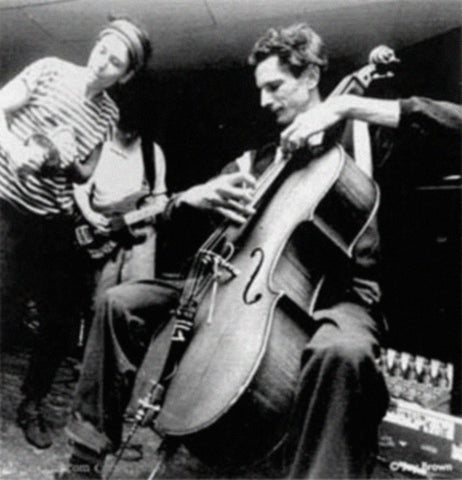\n\nHere's a birthday nod to the late **Tom Cora** , improvising cellist of out-rock, free-jazz, underground experimental and avant-garde styles. He modified and prepared his cello, often playing it violently like a guitar and through loud amplification.\n\nFrom Richmond, Virginia, he was originally a drummer before moving to jazz guitar in the DC area. Picking up the cello in college, he studied with Karl Berger and moved to NYC in '79. He quickly joined the rising Downtown avant-garde/improv scene, touring with Eugene Chadbourne and forming Curlew with George Cartwright & Bill Laswell and others.\n\nIn '82 he formed the improvising duo (or perhaps \"double solo\"?) Skeleton Crew with Fred Frith. In '86 he started a solo career, giving concerts in North America, Europe and Japan and playing for dancers and scoring music for film, including the '96 score for the classic silent flick _Man With A Movie Camera_. \n\nIn 1990 he formed Third Person with Samm Bennett and a revolving third member. That same year he started his life-lasting association with one of my very favorite bands in the world, Dutch anarchist/experimentalist punk/improv/world music ensemble The Ex. This is the point where I became a Cora fan, because I was (and am) really into The Ex. He made a few records with them and did over a hundred shows with them before Cora's death in France, at 44, from melanoma. \n\nIn addition to those named above, he also collaborated with John Zorn, Butch Morris, David Moss, Chris Cutler, Zeena Parkins, HP Zinker, Duck & Cover, Toshinori Kondo, Don Byron, Roof, Hans Reichel, Richard Teitelbaum, Peter Kowald and Cora's wife Catherine Jauniaux (among many others). His music was just as influenced by Eastern European and Turkish folk musics as it was progressive rock, free jazz and avant-garde. He was also a bassist and builder of various instruments.",
"filePath": "content/posts/tom-cora-sept-14-1953-april-9-1998.md",
"digest": "ae554a10d39ab20f",
"rendered": {
"html": "<p><img src=\"/images/TomCora_with_TheEx_large.jpg\" alt=\"\"></p>\n<p>Here’s a birthday nod to the late <strong>Tom Cora</strong> , improvising cellist of out-rock, free-jazz, underground experimental and avant-garde styles. He modified and prepared his cello, often playing it violently like a guitar and through loud amplification.</p>\n<p>From Richmond, Virginia, he was originally a drummer before moving to jazz guitar in the DC area. Picking up the cello in college, he studied with Karl Berger and moved to NYC in ‘79. He quickly joined the rising Downtown avant-garde/improv scene, touring with Eugene Chadbourne and forming Curlew with George Cartwright & Bill Laswell and others.</p>\n<p>In ‘82 he formed the improvising duo (or perhaps “double solo”?) Skeleton Crew with Fred Frith. In ‘86 he started a solo career, giving concerts in North America, Europe and Japan and playing for dancers and scoring music for film, including the ‘96 score for the classic silent flick <em>Man With A Movie Camera</em>.</p>\n<p>In 1990 he formed Third Person with Samm Bennett and a revolving third member. That same year he started his life-lasting association with one of my very favorite bands in the world, Dutch anarchist/experimentalist punk/improv/world music ensemble The Ex. This is the point where I became a Cora fan, because I was (and am) really into The Ex. He made a few records with them and did over a hundred shows with them before Cora’s death in France, at 44, from melanoma.</p>\n<p>In addition to those named above, he also collaborated with John Zorn, Butch Morris, David Moss, Chris Cutler, Zeena Parkins, HP Zinker, Duck & Cover, Toshinori Kondo, Don Byron, Roof, Hans Reichel, Richard Teitelbaum, Peter Kowald and Cora’s wife Catherine Jauniaux (among many others). His music was just as influenced by Eastern European and Turkish folk musics as it was progressive rock, free jazz and avant-garde. He was also a bassist and builder of various instruments.</p>",
"metadata": {
"headings": [],
"localImagePaths": [],
"remoteImagePaths": [],
"frontmatter": {
"web-scraper-order": "1746562093-480",
"web-scraper-start-url": "https://peaceandrhythm.com",
"title": "Tom Cora / Sept 14, 1953 - April 9, 1998",
"pagination": "https://www.peaceandrhythm.com/?page=16",
"date": "September 14, 2017",
"post": "Tom Cora / Sept 14, 1953 - April 9, 1998",
"post-href": "https://www.peaceandrhythm.com/blogs/news/tom-cora-sept-14-1953-april-9-1998",
"slug": "tom-cora-sept-14-1953-april-9-1998"
},
"imagePaths": []
}
},
"collection": "blog"
},
{
"id": "yma-sumac-sept-13-1922-nov-1-2008",
"data": {
"title": "Yma Sumac / Sept 13, 1922 - Nov 1, 2008",
"slug": "yma-sumac-sept-13-1922-nov-1-2008",
"date": "2017-09-13T00:00:00.000Z"
},
"body": "\n\nHappy birthday to that Peruvian songbird with the five-plus octave vocal range, Zoila Augusta Emperatriz Chávarri del Castillo, aka **Yma Sumac**. Not truly an Inca princess but her name does mean \"beautiful\" in Quechua and she became a '50s pop music icon.\n\nShe started her singing career on the radio in '42 and made her first records the following year. After moving to NYC in the late '40s she signed to Capitol and proceeded to become one of the major stars of the \"exotica\" craze. In the early '50s she toured Europe, Africa, Asia, the Middle East and Australia. She worked with producers Les Baxter and Billy May, making some of the best-selling records of the '50s. Appearances on Broadway and in films helped sustain her mysterious image.\n\nThe early '60s found her spending considerable time in the Soviet Union, followed by more world touring before slowing down the pace in the second half of that decade. She made a cult rock album in '71 (_Miracles_ , check the opening track for the best of the disk). She spent most of the '70s in Peru but made an international comeback of sorts in the '80s. The renewed interest in the '90s in \"exotica\" music helped raise her profile and she has been sampled by hiphop groups. In 2016 (the day I typed this on her birthday) she was featured on Google's search page.",
"filePath": "content/posts/yma-sumac-sept-13-1922-nov-1-2008.md",
"digest": "e692f0ddd1a239ef",
"rendered": {
"html": "<p><img src=\"/images/ymasumac2_large.jpg\" alt=\"\"></p>\n<p>Happy birthday to that Peruvian songbird with the five-plus octave vocal range, Zoila Augusta Emperatriz Chávarri del Castillo, aka <strong>Yma Sumac</strong>. Not truly an Inca princess but her name does mean “beautiful” in Quechua and she became a ’50s pop music icon.</p>\n<p>She started her singing career on the radio in ‘42 and made her first records the following year. After moving to NYC in the late ’40s she signed to Capitol and proceeded to become one of the major stars of the “exotica” craze. In the early ’50s she toured Europe, Africa, Asia, the Middle East and Australia. She worked with producers Les Baxter and Billy May, making some of the best-selling records of the ’50s. Appearances on Broadway and in films helped sustain her mysterious image.</p>\n<p>The early ’60s found her spending considerable time in the Soviet Union, followed by more world touring before slowing down the pace in the second half of that decade. She made a cult rock album in ‘71 (<em>Miracles</em> , check the opening track for the best of the disk). She spent most of the ’70s in Peru but made an international comeback of sorts in the ’80s. The renewed interest in the ’90s in “exotica” music helped raise her profile and she has been sampled by hiphop groups. In 2016 (the day I typed this on her birthday) she was featured on Google’s search page.</p>",
"metadata": {
"headings": [],
"localImagePaths": [],
"remoteImagePaths": [],
"frontmatter": {
"web-scraper-order": "1746562091-479",
"web-scraper-start-url": "https://peaceandrhythm.com",
"title": "Yma Sumac / Sept 13, 1922 - Nov 1, 2008",
"pagination": "https://www.peaceandrhythm.com/?page=16",
"date": "September 13, 2017",
"post": "Yma Sumac / Sept 13, 1922 - Nov 1, 2008",
"post-href": "https://www.peaceandrhythm.com/blogs/news/yma-sumac-sept-13-1922-nov-1-2008",
"slug": "yma-sumac-sept-13-1922-nov-1-2008"
},
"imagePaths": []
}
},
"collection": "blog"
}
]
Tim Maia / Sept 28, 1942 - March 15, 1998
September 28, 2017
Feliz anniversário para Tim Maia , the fun & lovable Brazilian soul singer and MPB star who's direct honesty appealed to his fans. Born Sebastião Rodrigues Maia from a favela of Rio, the 18th of 19 children, he started as a drummer at 14 but soon became an excellent guitarist....
Tuli Kupferberg / Sept 28, 1923 - July 12, 2010
September 28, 2017
Happy birthday to the beatnik poet/singer/artist/anarchist Tuli Kupferberg! From NYC, he founded a beat magazine, Birth , in 1958, publishing Allen Ginsberg, Diane DiPrima, Leroi Jones (aka Amiri Baraka), Ted Joans and others. In 1964 he and Ed Sanders founded the unfiltered anti-pop group The Fugs, who released their humorous...
Víctor Jara / Sept 28, 1932 - Sept 16, 1973
September 28, 2017
One of Chilé's national heroes, Víctor Jara was a martyred nueva-canción folk singer and songwriter who was victim of the bloody US-funded Pinochet coup and horrific ensuing violence. He was murdered and his body thrown into the street. This post honoring Jara on his birthday could also be considered a...
André Tanker / Sept 25, 1941 - Feb 28, 2003
September 25, 2017
Happy birthday to Trinidadian composer André Tanker , the "Bob Dyan of T&T". Born in Port-of-Spain, he started playing the steelpan at 7 and as a teenager learned guitar and cuatro. He also played vibraphone and harmonica. He worked as an arranger for the Invaders Steel Orchestra, who were based...
Hugo Blanco / Sept 25, 1940 - June 14, 2015
September 25, 2017
Happy birthday to Hugo Blanco , one of the greats of Venezuelan music and the South American harp. The author of "Moliendo Café", written in 1958 and now a "world music" standard, Blanco was born in Caracas and learned to play the cuatro at 15. He fused Venezuelan folk music...
Sam Rivers / Sept 25, 1923 - Dec 26, 2011
September 25, 2017
One of my favorite multi-reed improvisors, Sam Rivers was born on this day in 1923. He came from Oklahoma, his father and grandfather were gospel singers and helped give little Sammy the music bug. After some time as a youth in Chicago & Little Rock, he started his professional career...
Blind Lemon Jefferson / Sept 24, 1893 - Dec 19, 1929
September 24, 2017
Perhaps the first country blues star and indisputably the father of Texas style blues, the unique guitar stylist and impressive singer Lemon Henry Jefferson (aka "Blind Lemon Jefferson ") was born without sight to a sharecropping family from Texas. He began playing guitar at 19 and soon after he befriended...
Fats Navarro / Sept 24, 1923 - July 6, 1950
September 24, 2017
Happy birthday to the bop trumpeter Fats Navarro , good friend of Charles Mingus and a huge influence on Clifford Brown before Navarro's short life ended at just 26. Our Afro-Cuban-Chinese hero was from Key West and played in Florida and Cincinnati to begin his pro career. To Kansas City...
Jesse Ed Davis / Sept 21, 1944 - June 22, 1988
September 21, 2017
One of the most-called session men of his day, the Comanche/Kiowa tribal guitarist/pianist Jesse Ed Davis was born on this day in 1944. His father Jesse was a well-known "True Indian" painter. The younger Davis got his musical career started in his native Oklahoma in a band in the late...
Leonard Cohen / Sept 21, 1934 - Nov 7, 2016
September 21, 2017
One of my very favorite wordsmiths, Leonard Cohen delivered some lyrics of the deepest and most imaginative variety, a man who could articulate any emotion in the heaviest and clearest poetic sense. No topic was off limits and no emotion was irrelevant. A Montreal native, Leonard began his career strictly...
Billy Bang / Sept 20, 1947 - April 11, 2011
September 20, 2017
Happy birthday to Billy Bang , avant-jazz violinist of the NYC downtown loft jazz scene of the '70s & '80s and beyond. A unique presence, his style merges contemporary "classical"/avant-garde, fire music/free-jazz, blues, swing and funk and he always chose great sideman. He could work well as a solo performer,...
Eddie Bo / Sept 20, 1930 - March 18, 2009
September 20, 2017
One of the New Orleans iconic producers, Edwin Bocage aka Eddie Bo brought a harder, grittier sound to the Crescent City in the '60s & '70s funk world. With his awesome drummer James Black and a stable of ripping vocalists, he cut several classics and remains a local legend. Himself...
Harry Whitaker / Sept 19, 1942 - Nov 17, 2010
September 19, 2017
Here's a nod to the underknown pianist Harry Whitaker , on his day of birth. Harry was more of a behind-the-scenes guy, best known for his work with Roy Ayers' Ubiquity (he composed the classic "We Live In Brooklyn Baby") and Roberta Flack (during her peak years). From Pensacola FL,...
Hank Williams / Sept 17, 1923 - Jan 1, 1953
September 17, 2017
One of my very favorites of the honky/cracker artists, country music star Hank Williams had a soulful delivery and wrote some lasting classics. He came from Alabama and got his guitar lessons from a black street performer named Rufus "Tee Tot" Payne before getting his professional start in Montgomery in...
King Stitt / Sept 17, 1940 - Jan 31, 2012
September 17, 2017
Here's a shout-out to "The Ugly One", pioneering Jamaican dee-jay "toaster" Winston Sparkes aka King Stitt. Born with a unique face and a stuttering habit, he embraced these attributes and they became part of his public persona. He got his start as an early deejay for Coxone Dodd's Downbeat sound...
B.B. King / Sept 16, 1925 - May 14, 2015
September 16, 2017
Happy birthday to the lovable soul-blues icon B.B. King! A huge influence on so many electric blues guitarists & singers, soul artists as well as the rock generation, his style was immediately identifiable and his hit songs rank among the most loved in twentieth century music. From a sharecropping family...
Julian "Cannonball" Adderley / Sept 15, 1928 - Aug 8, 1975
September 15, 2017
** Julian "Cannonball" Adderley became one of the highly respected alto saxophonists of the hard bop and soul-jazz eras. Indeed, with his bluesy wail and accessible style he was one of jazz's most popular and visible artists in the late '60s and into the '70s before his death from a...
Cachao / Sept 14, 1918 - March 22, 2008
September 14, 2017
The greatest. Bassist, composer, Cuban music figure, master of the tumbao , inventor of Latin jazz, fine-tuner of the charanga , Israel López "Cachao " Valdéz was born in Old Havana, into a family of bass players. He grew up in the house that Jose Martí used to live in....
Tom Cora / Sept 14, 1953 - April 9, 1998
September 14, 2017
Here's a birthday nod to the late Tom Cora , improvising cellist of out-rock, free-jazz, underground experimental and avant-garde styles. He modified and prepared his cello, often playing it violently like a guitar and through loud amplification. From Richmond, Virginia, he was originally a drummer before moving to jazz guitar...
Yma Sumac / Sept 13, 1922 - Nov 1, 2008
September 13, 2017
Happy birthday to that Peruvian songbird with the five-plus octave vocal range, Zoila Augusta Emperatriz Chávarri del Castillo, aka Yma Sumac. Not truly an Inca princess but her name does mean "beautiful" in Quechua and she became a '50s pop music icon. She started her singing career on the radio...
